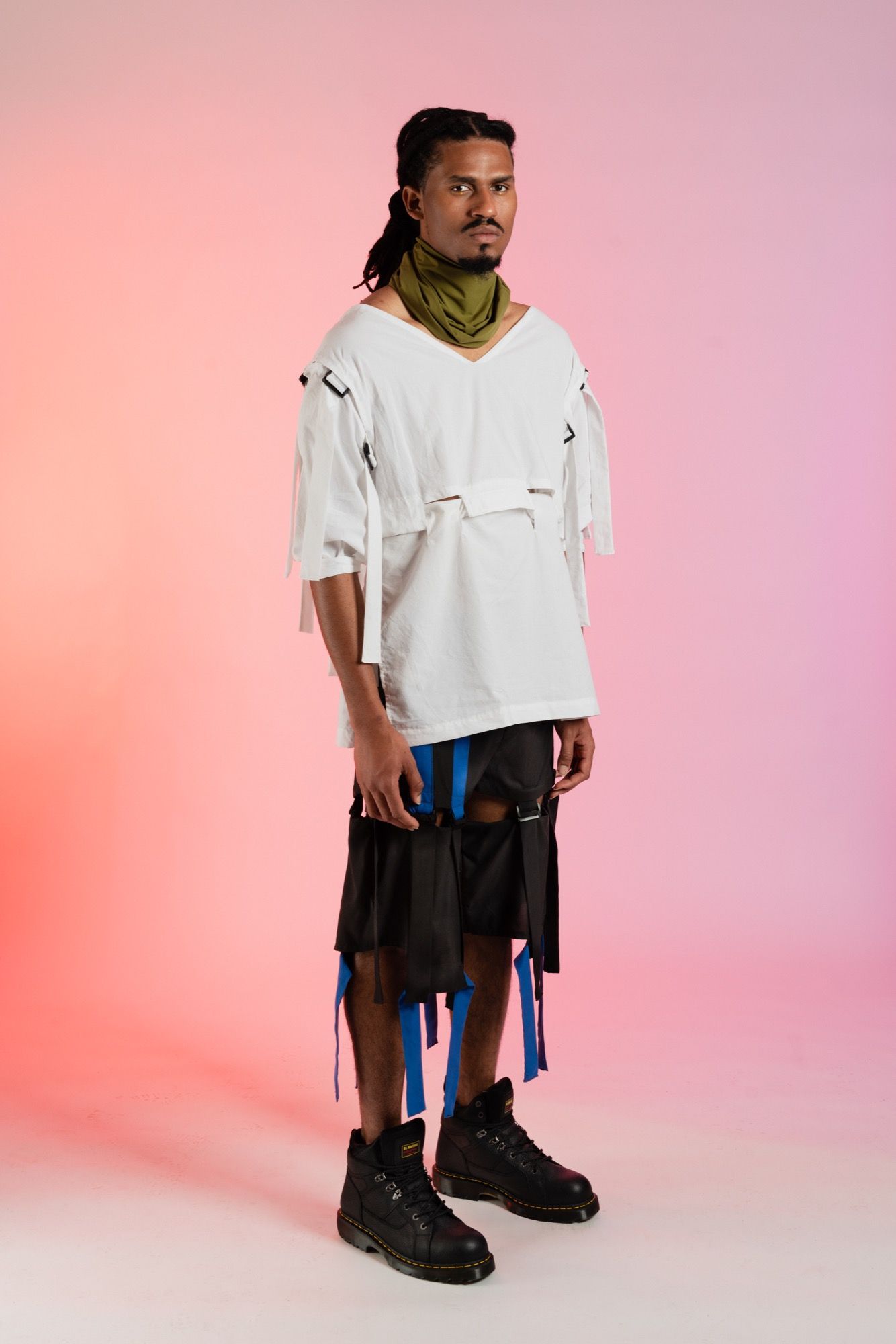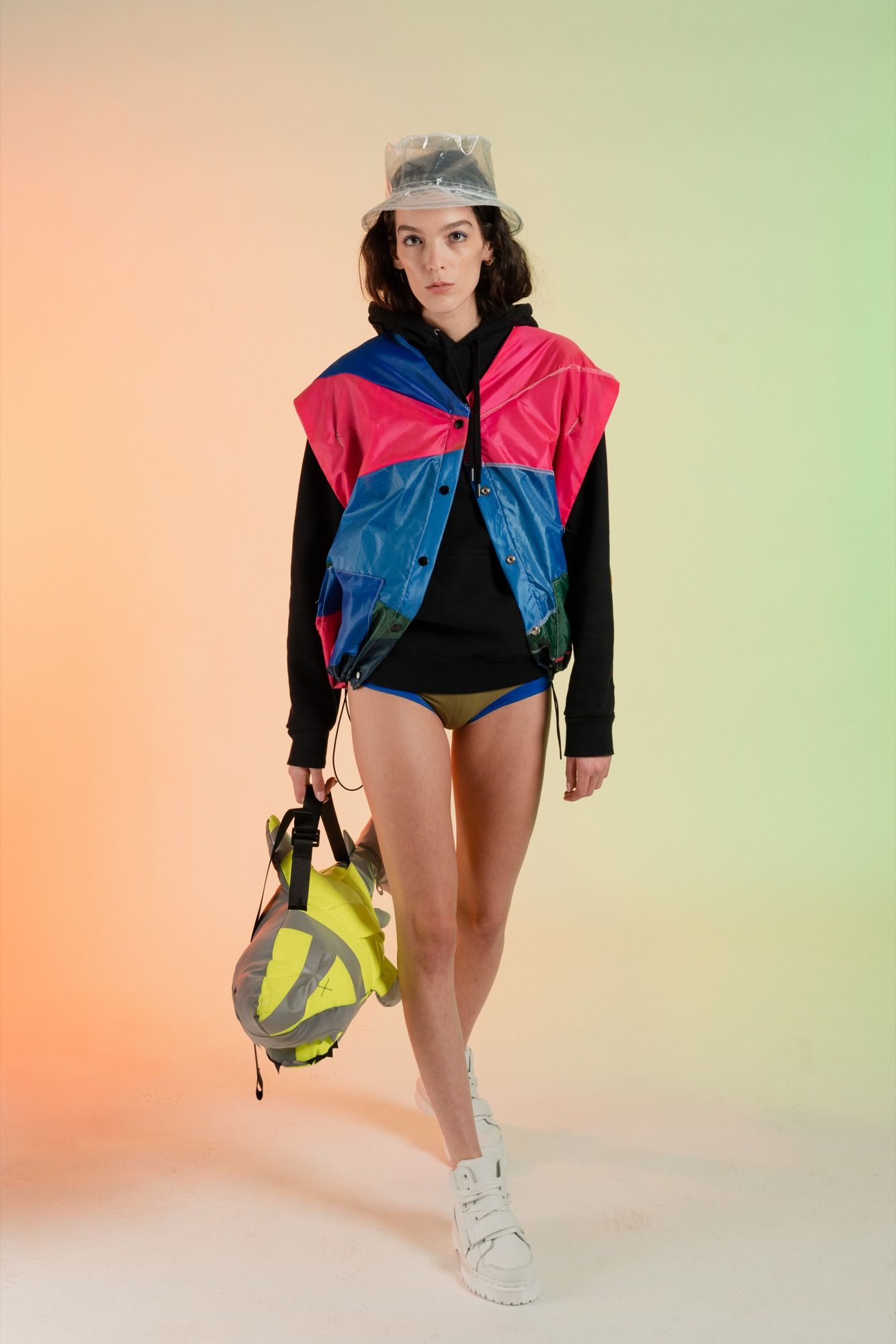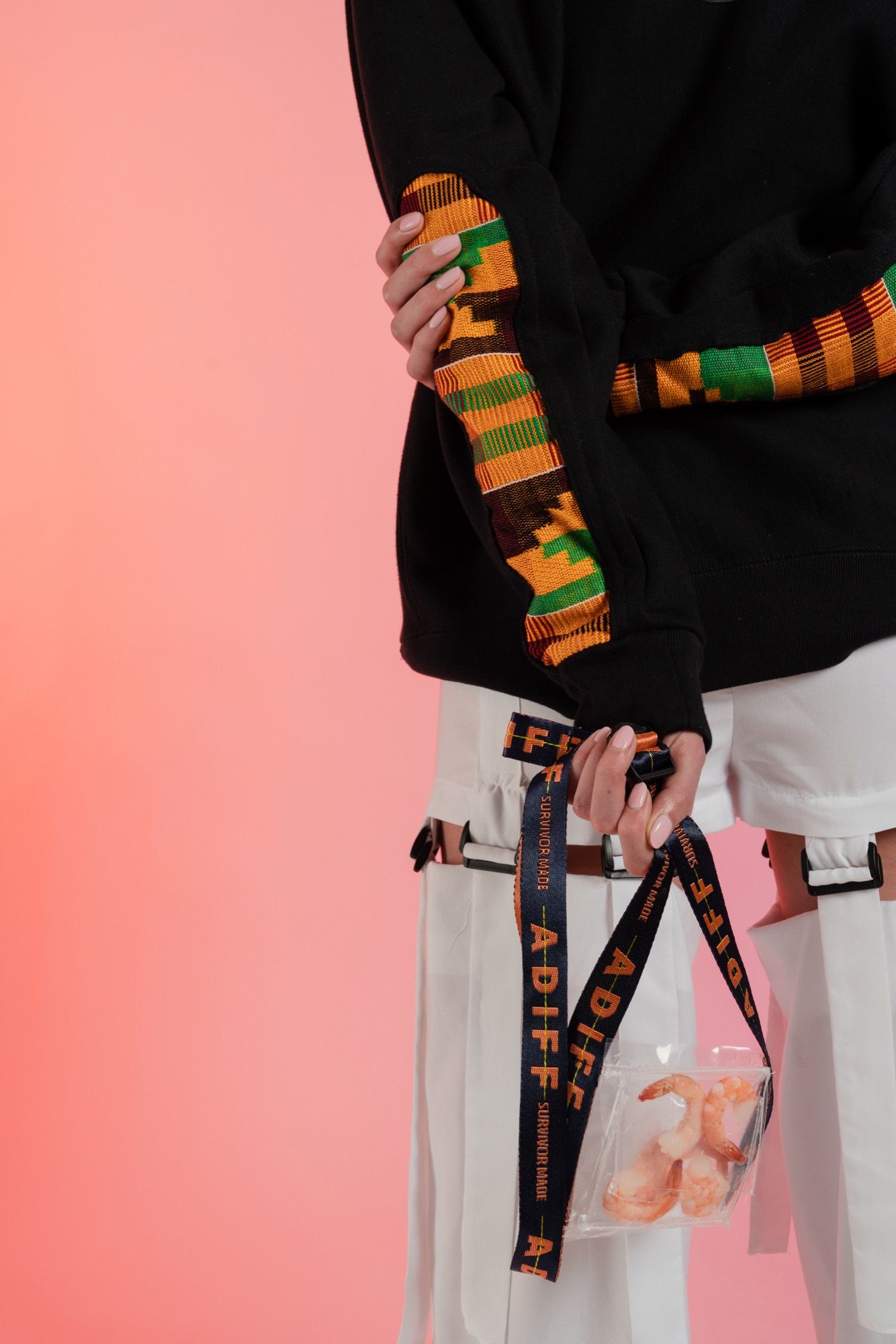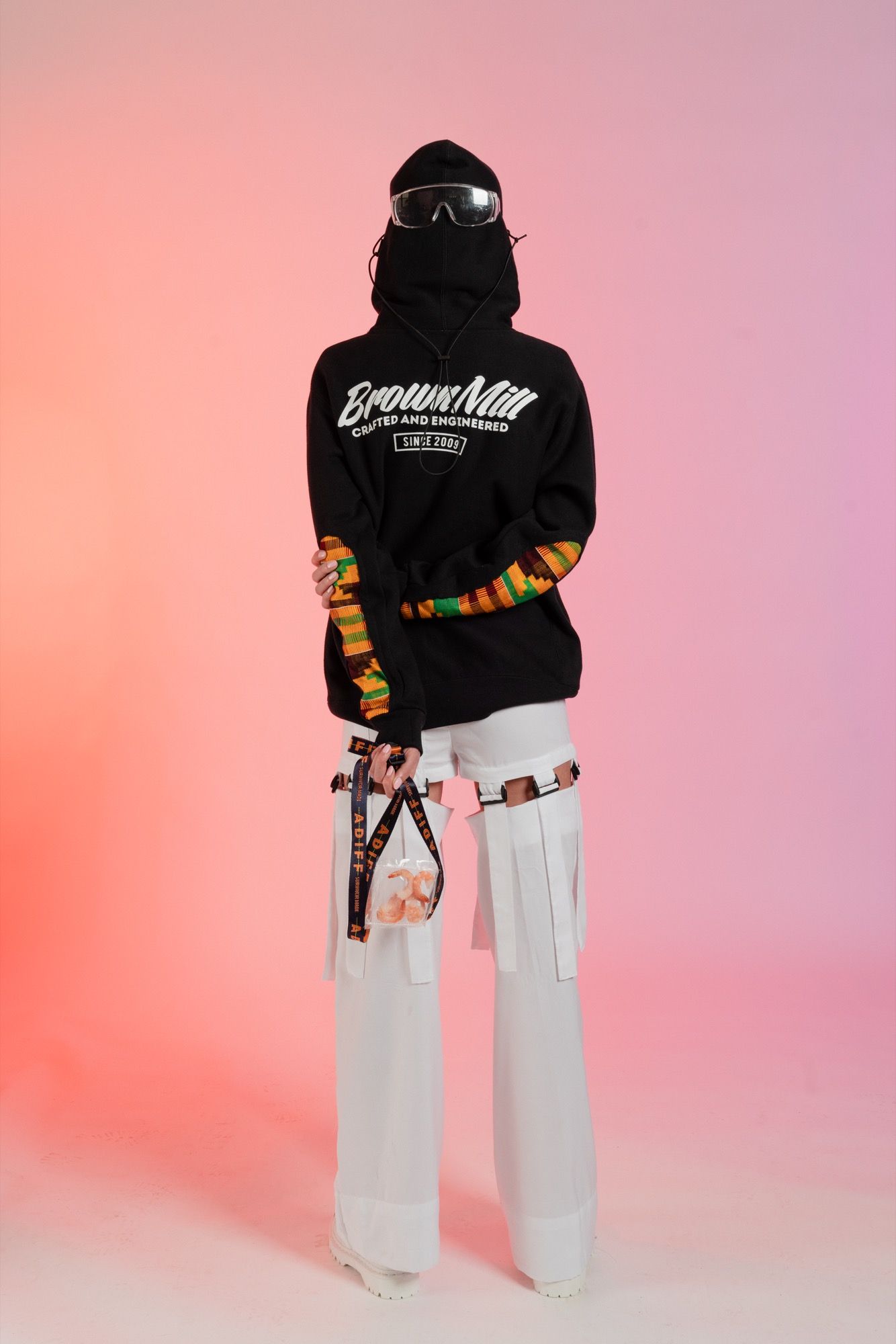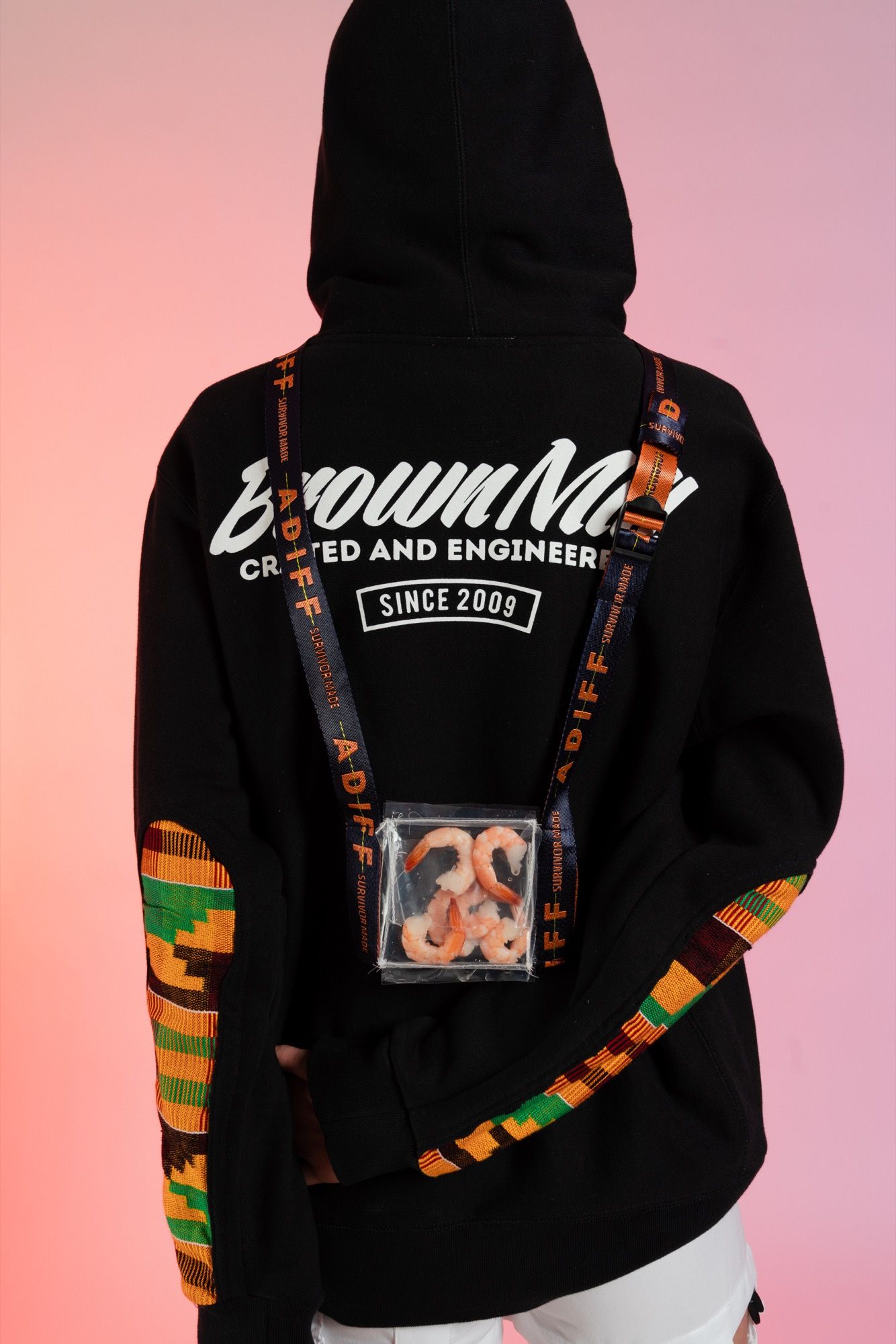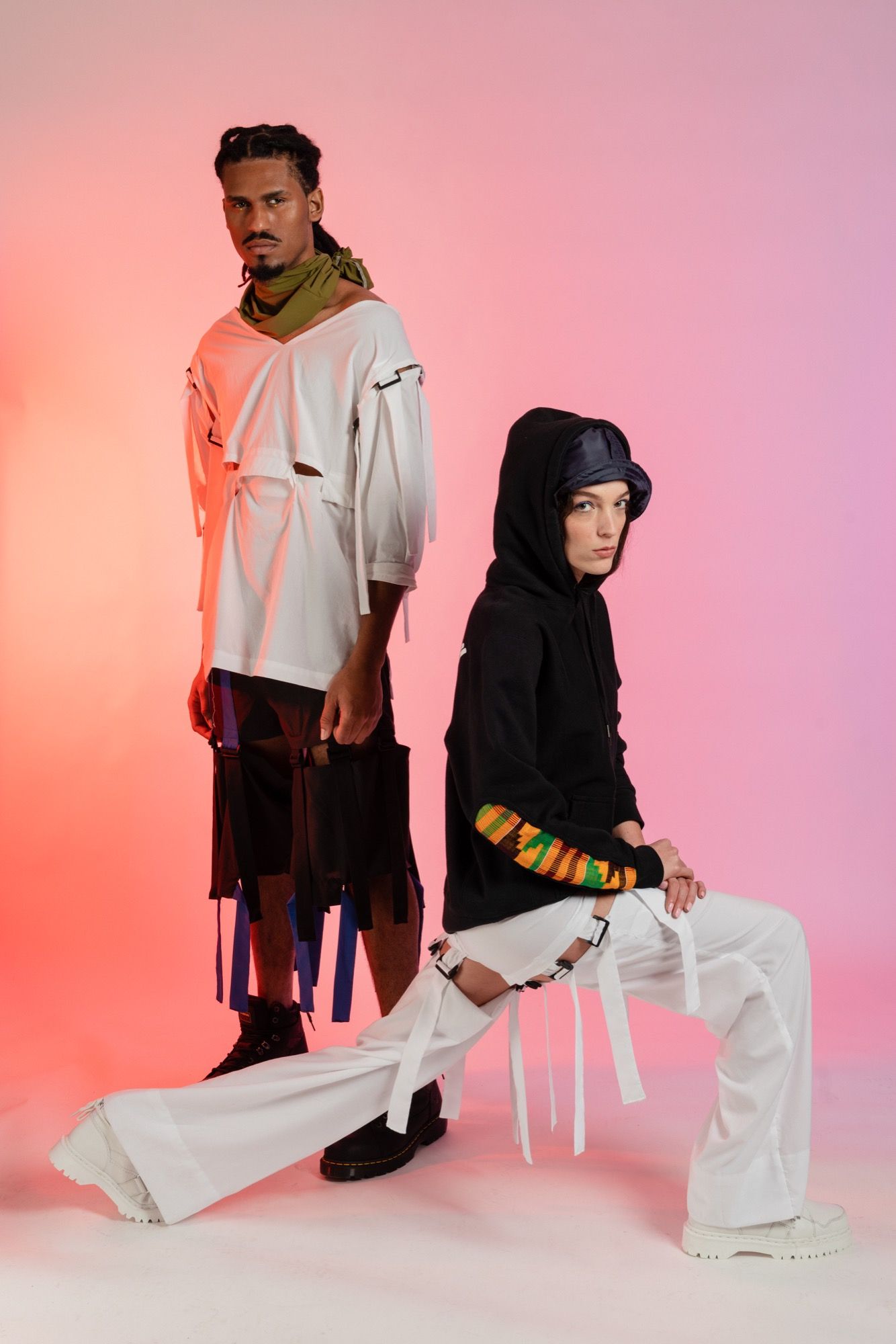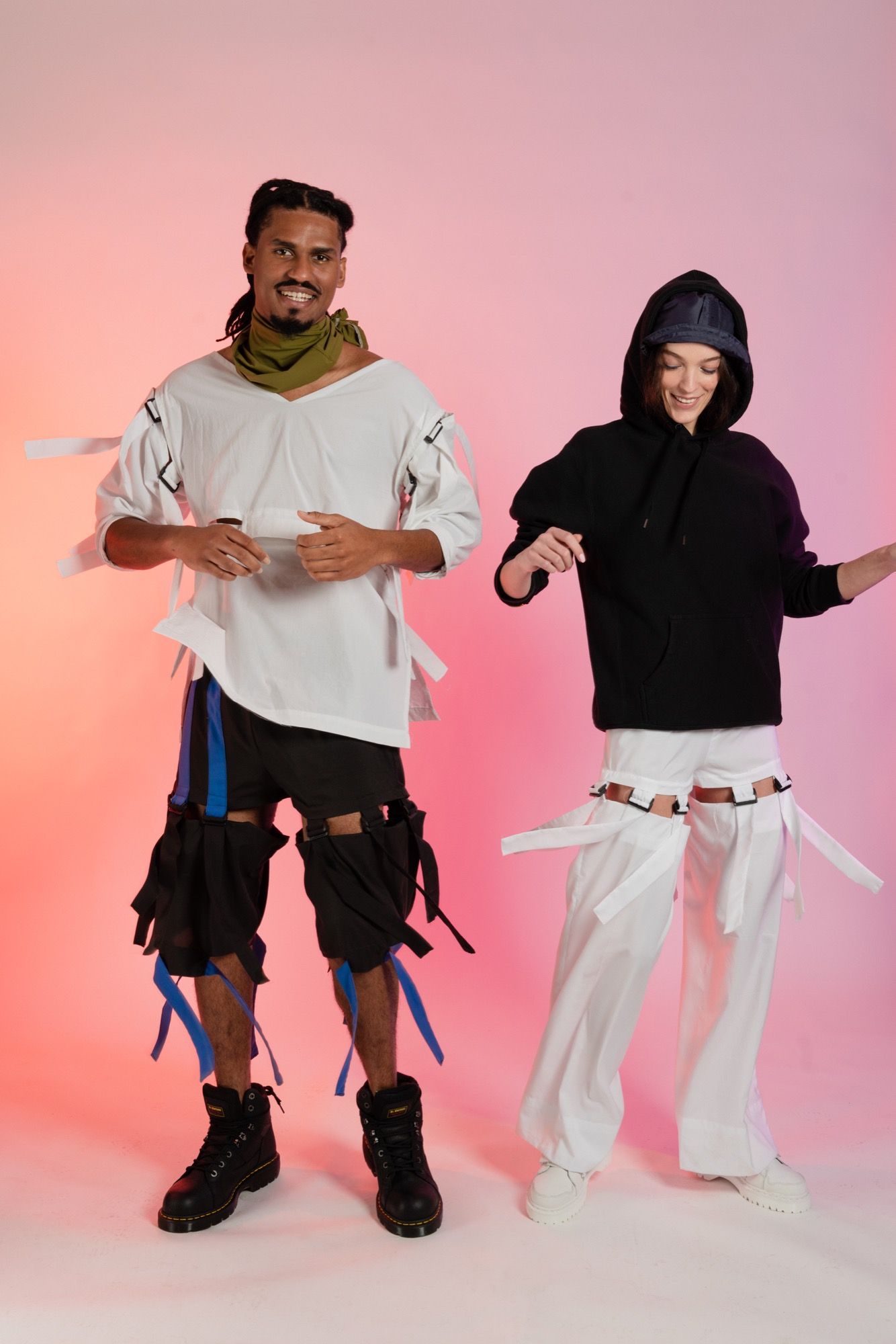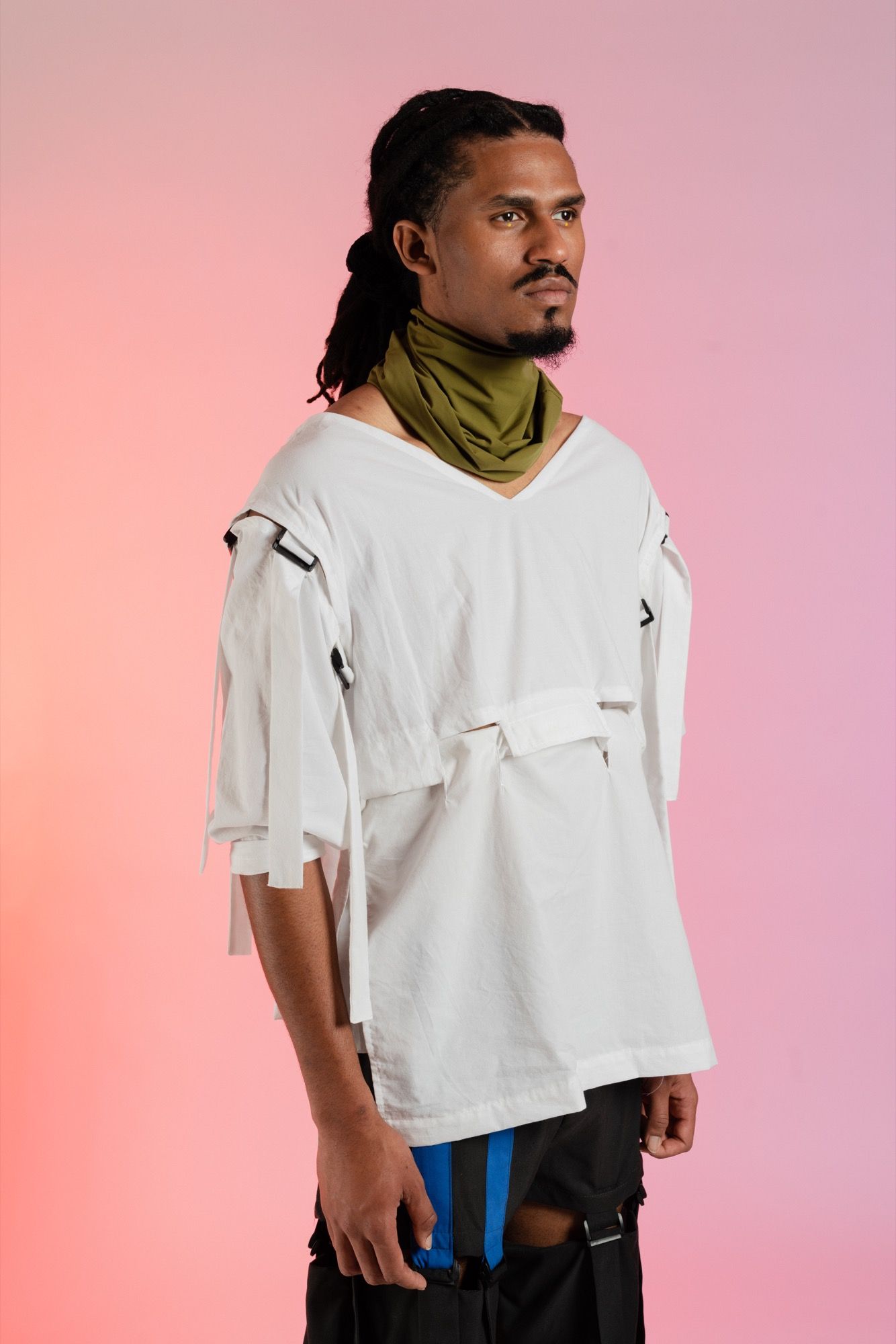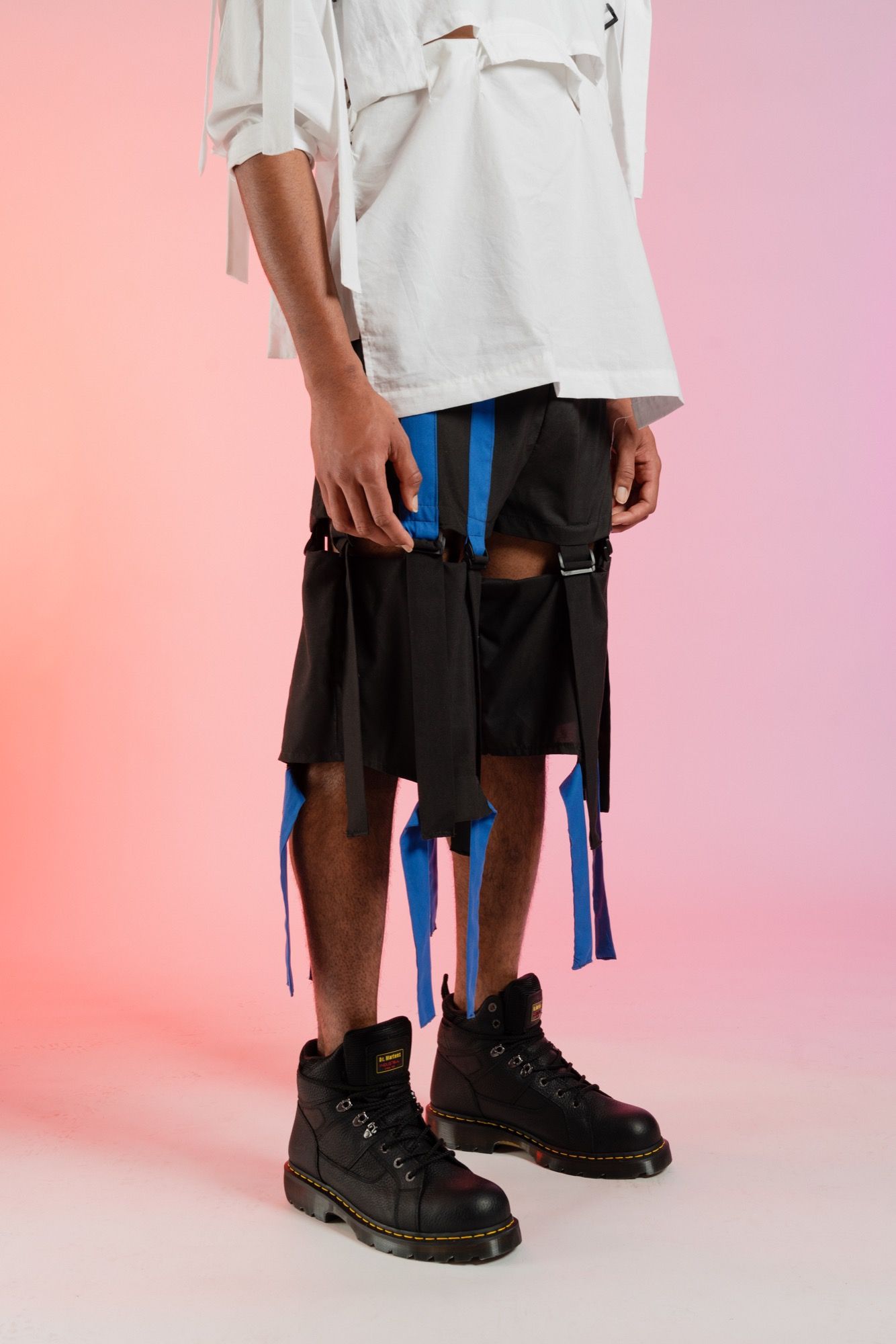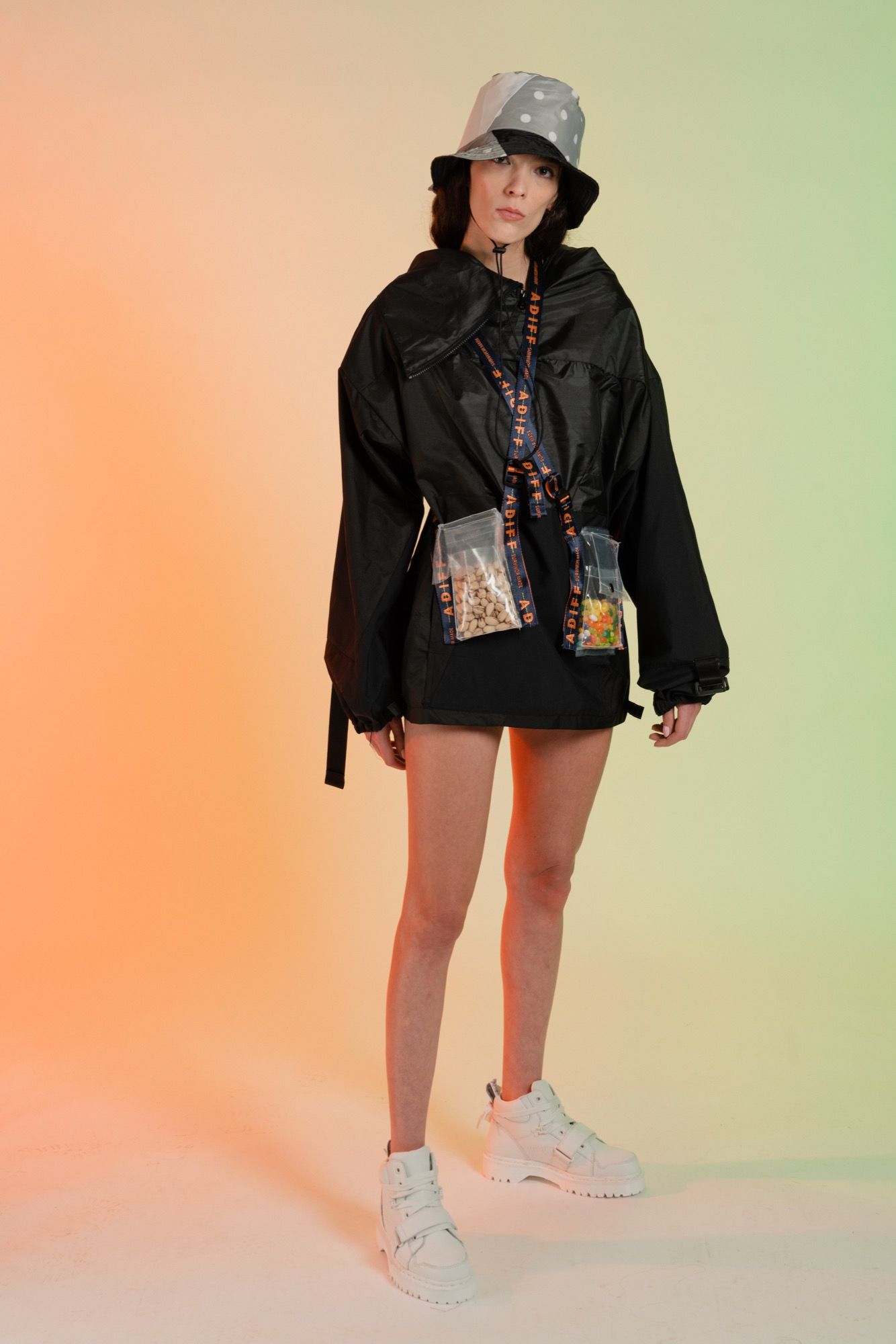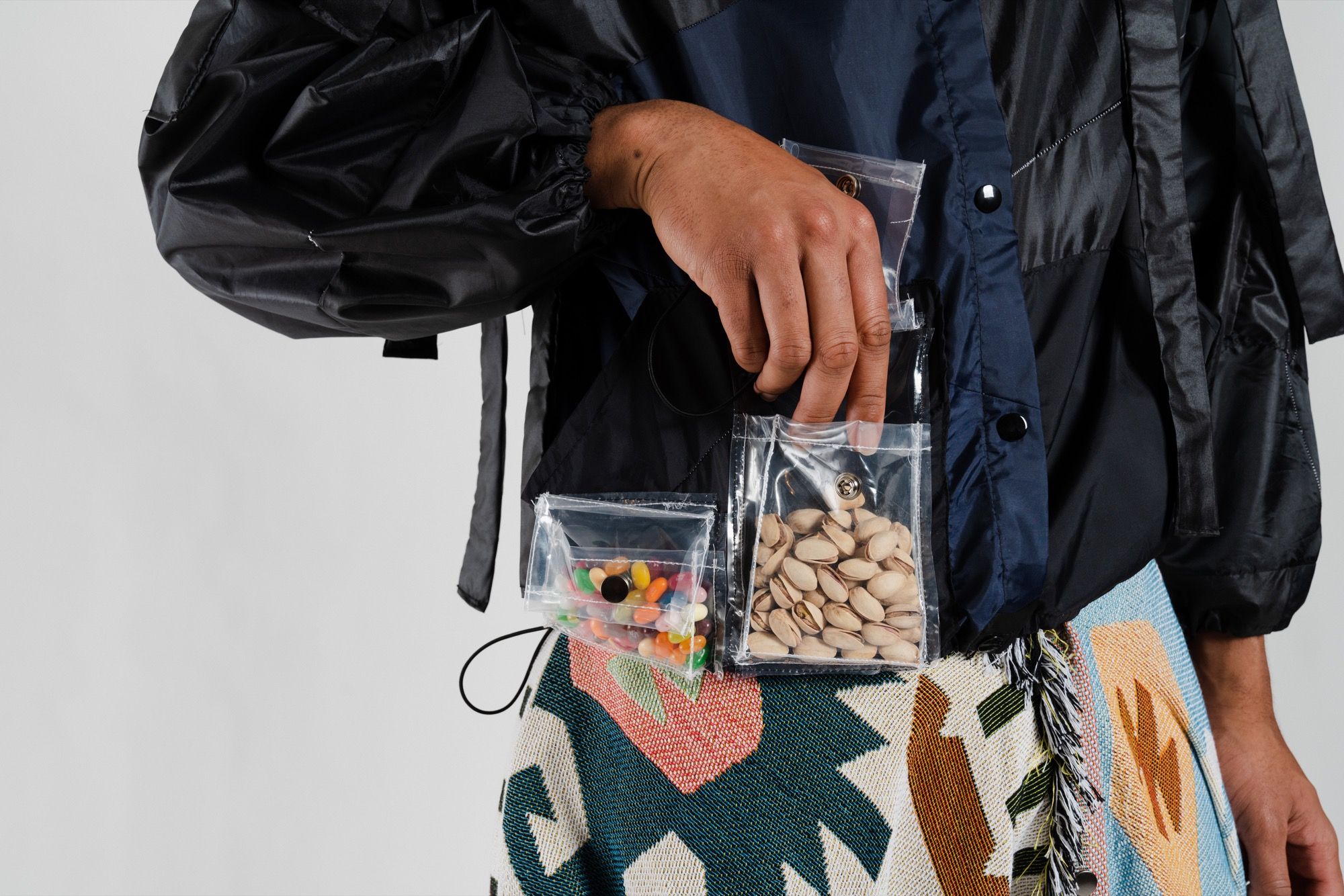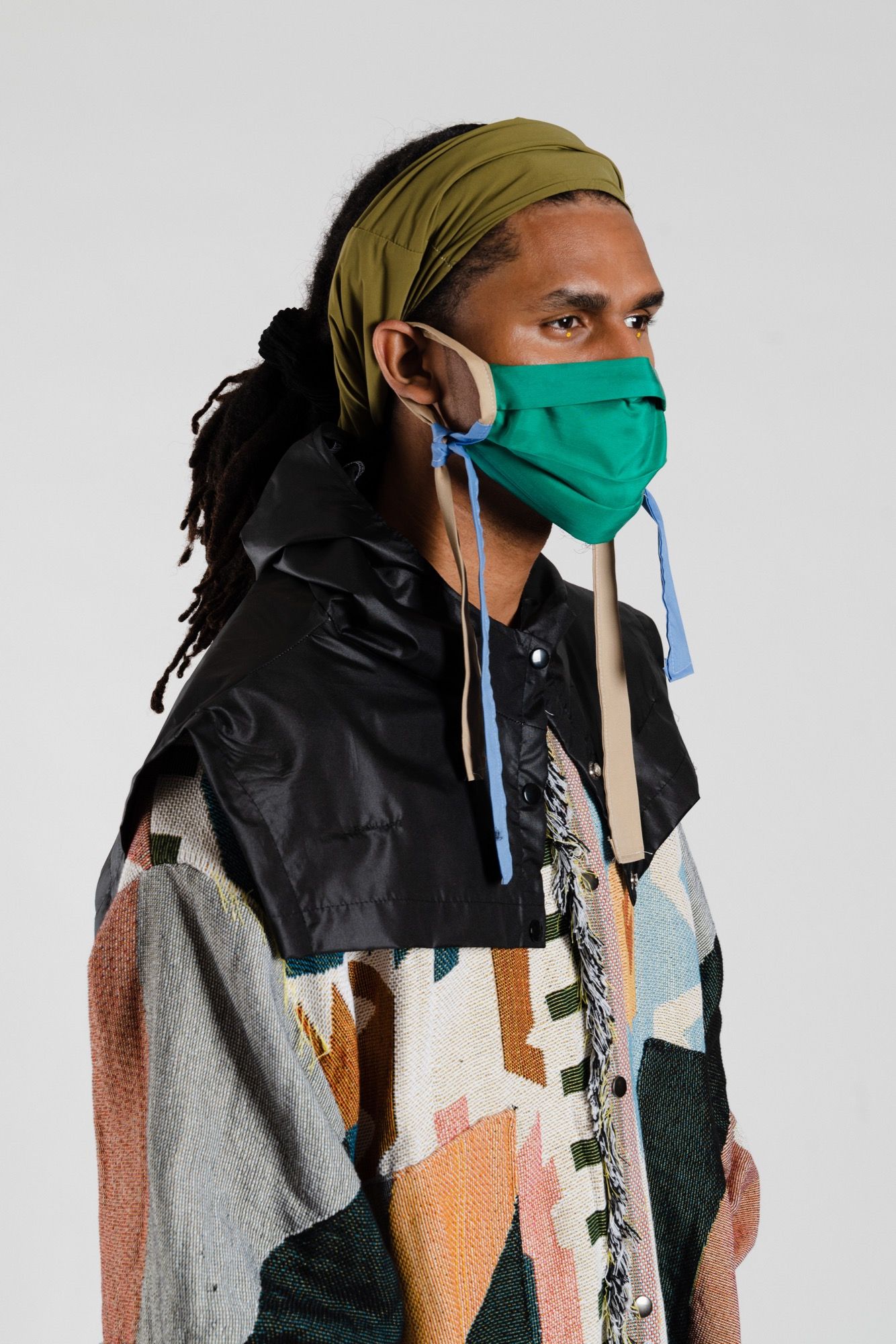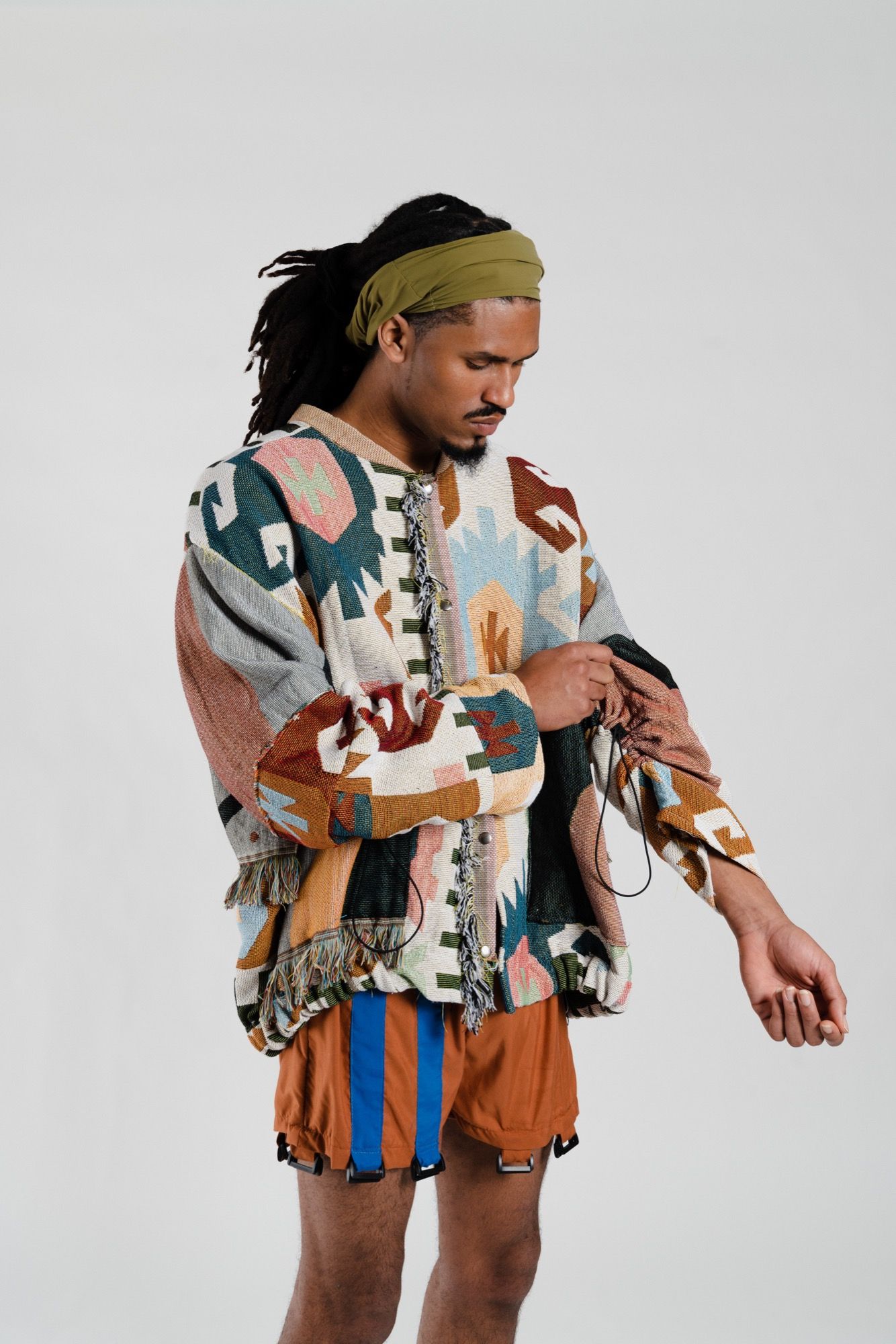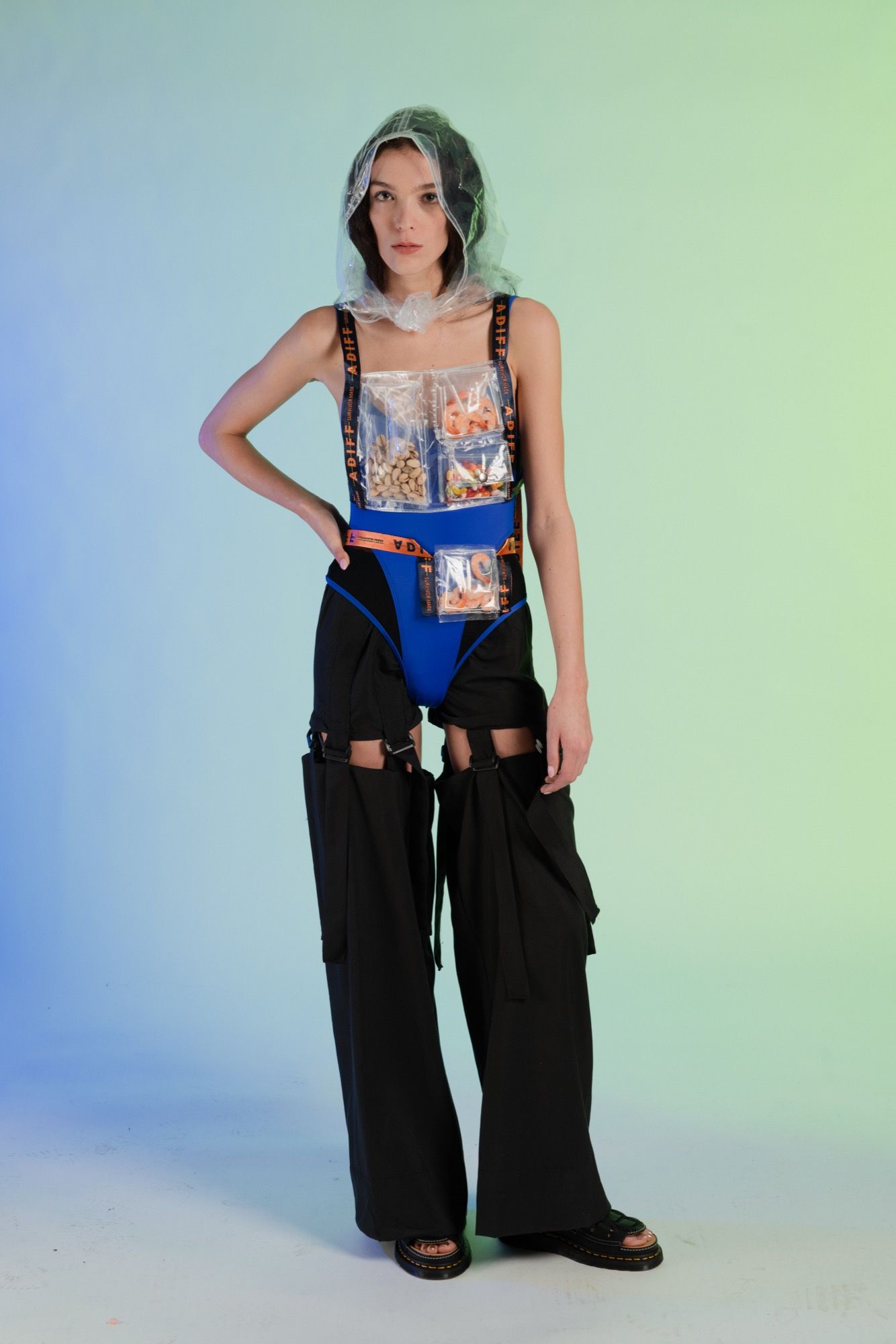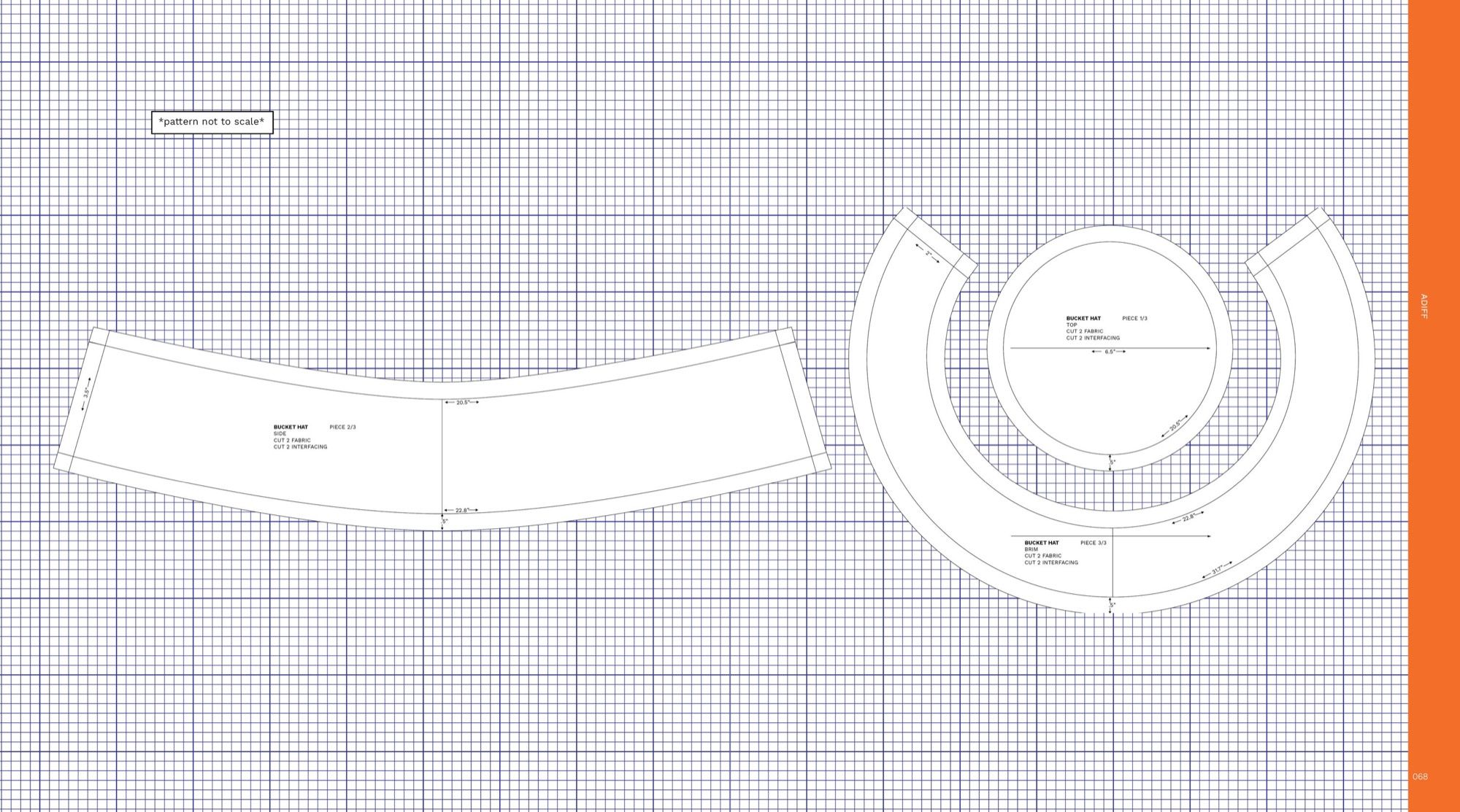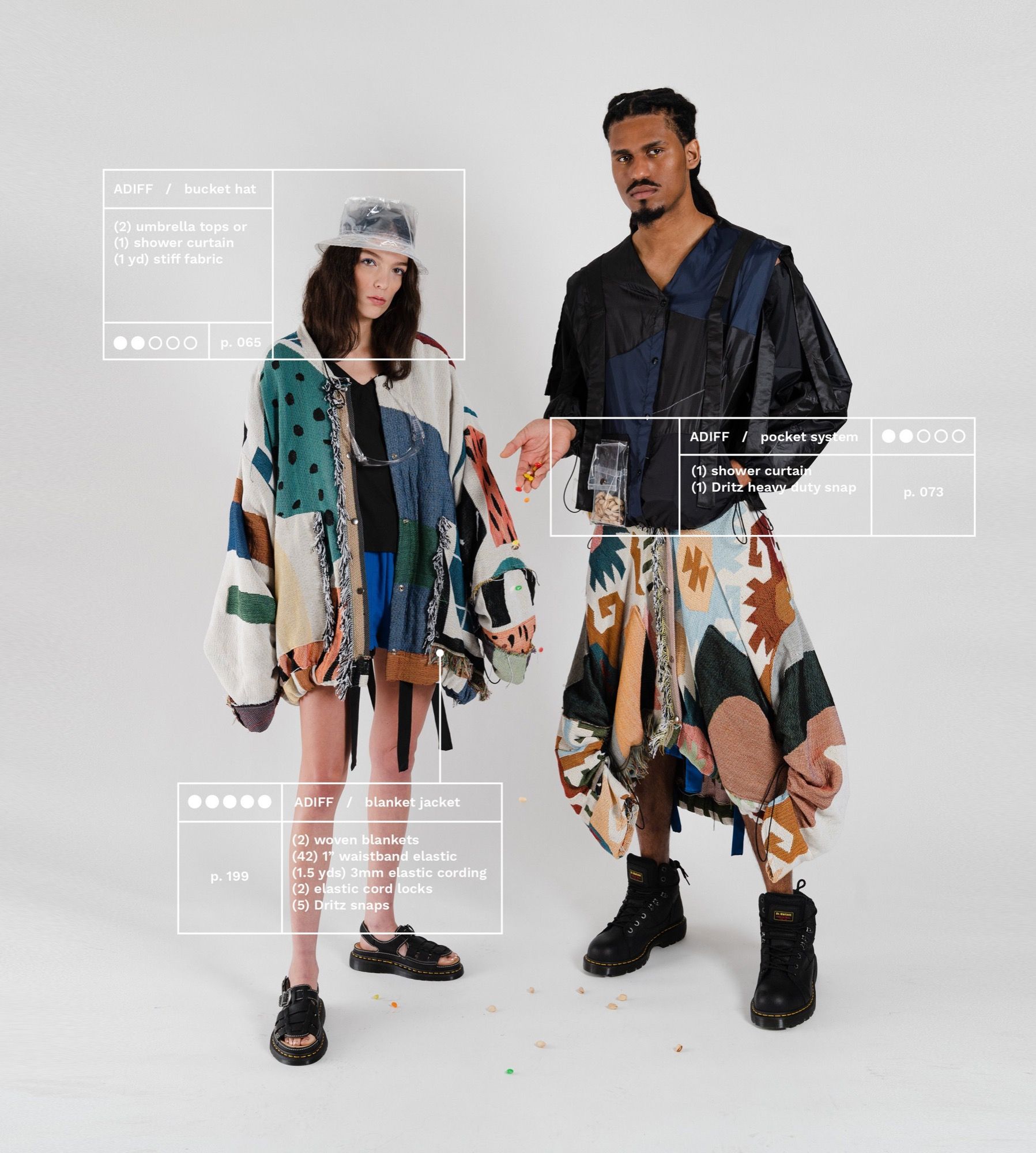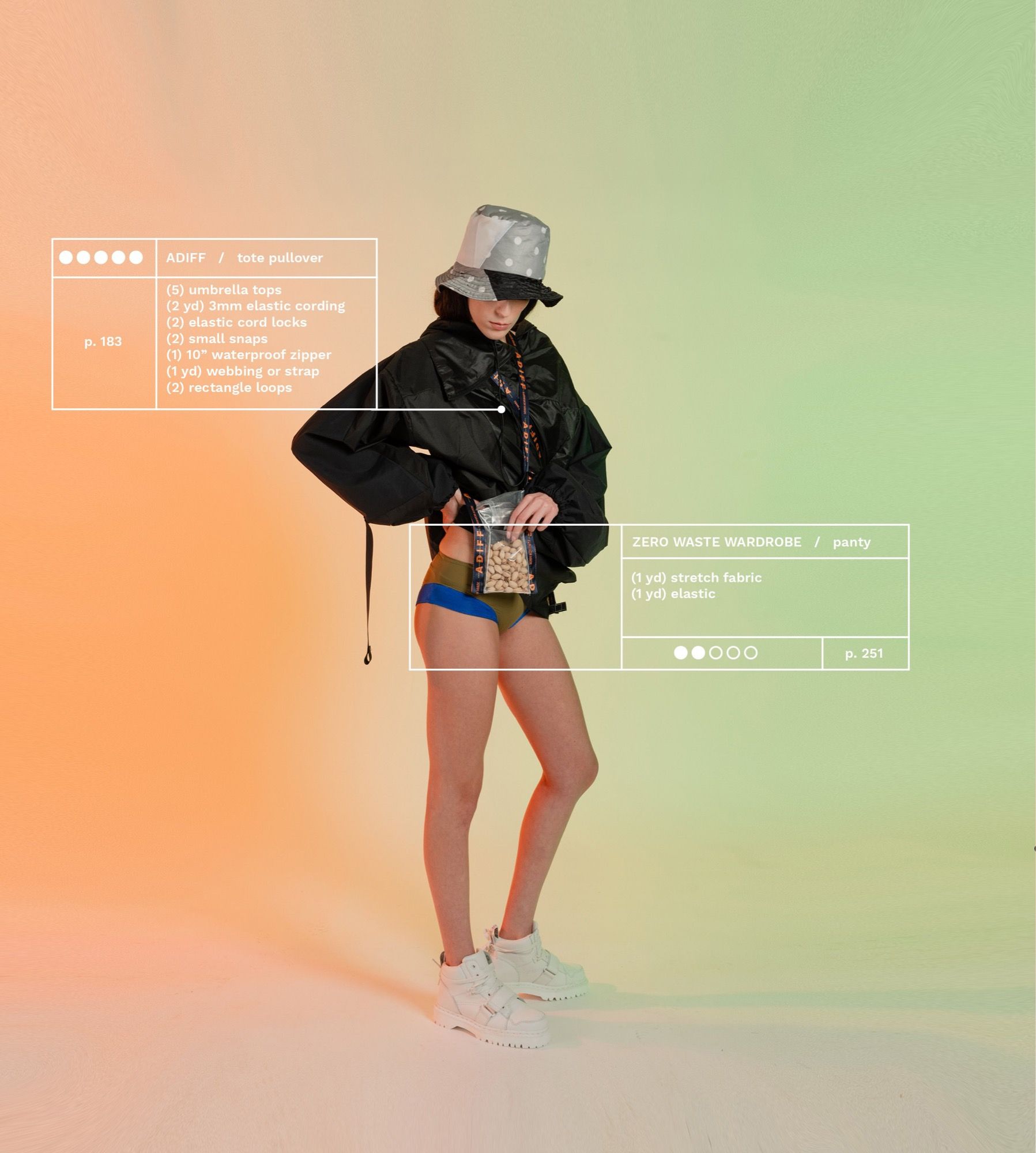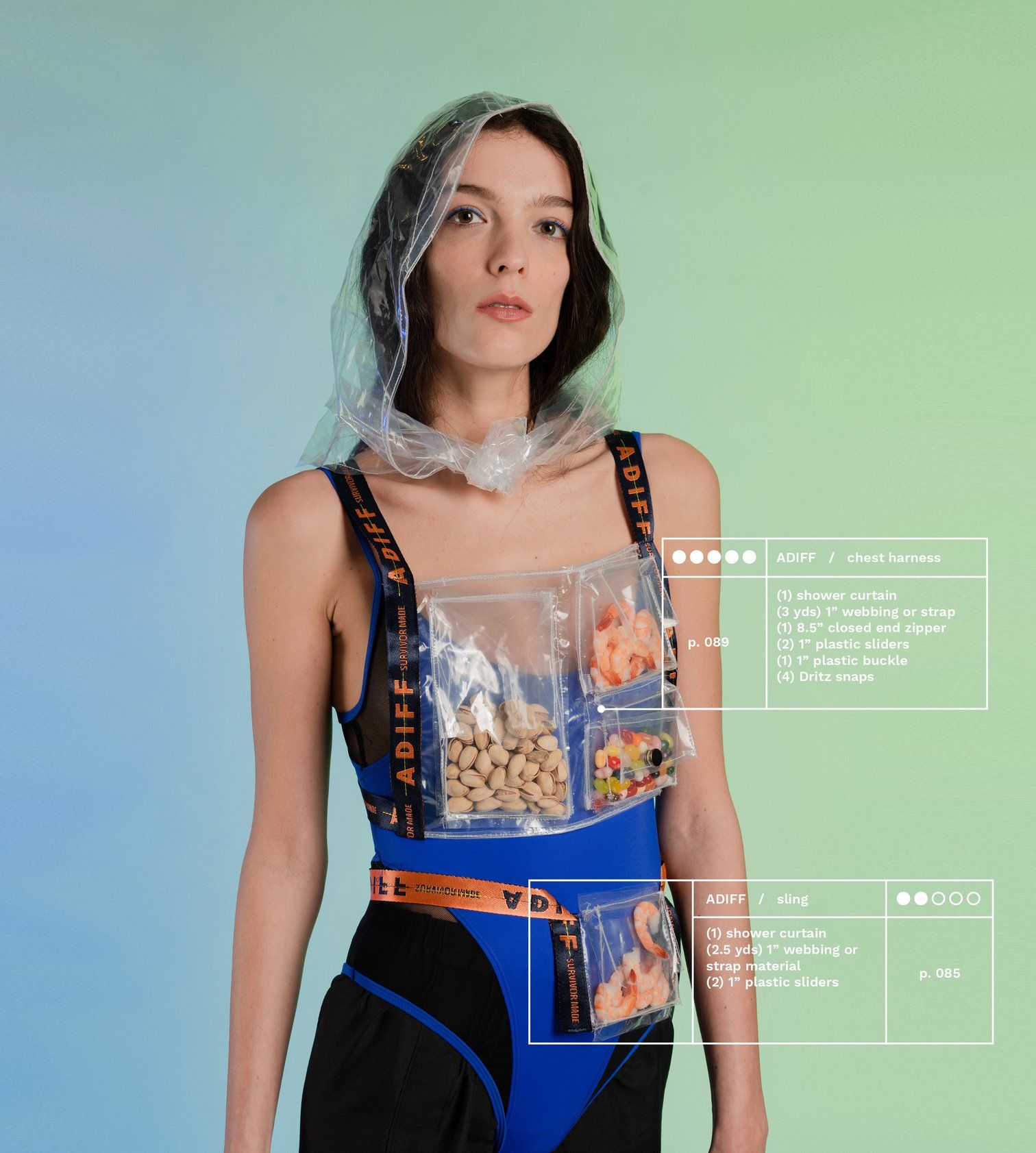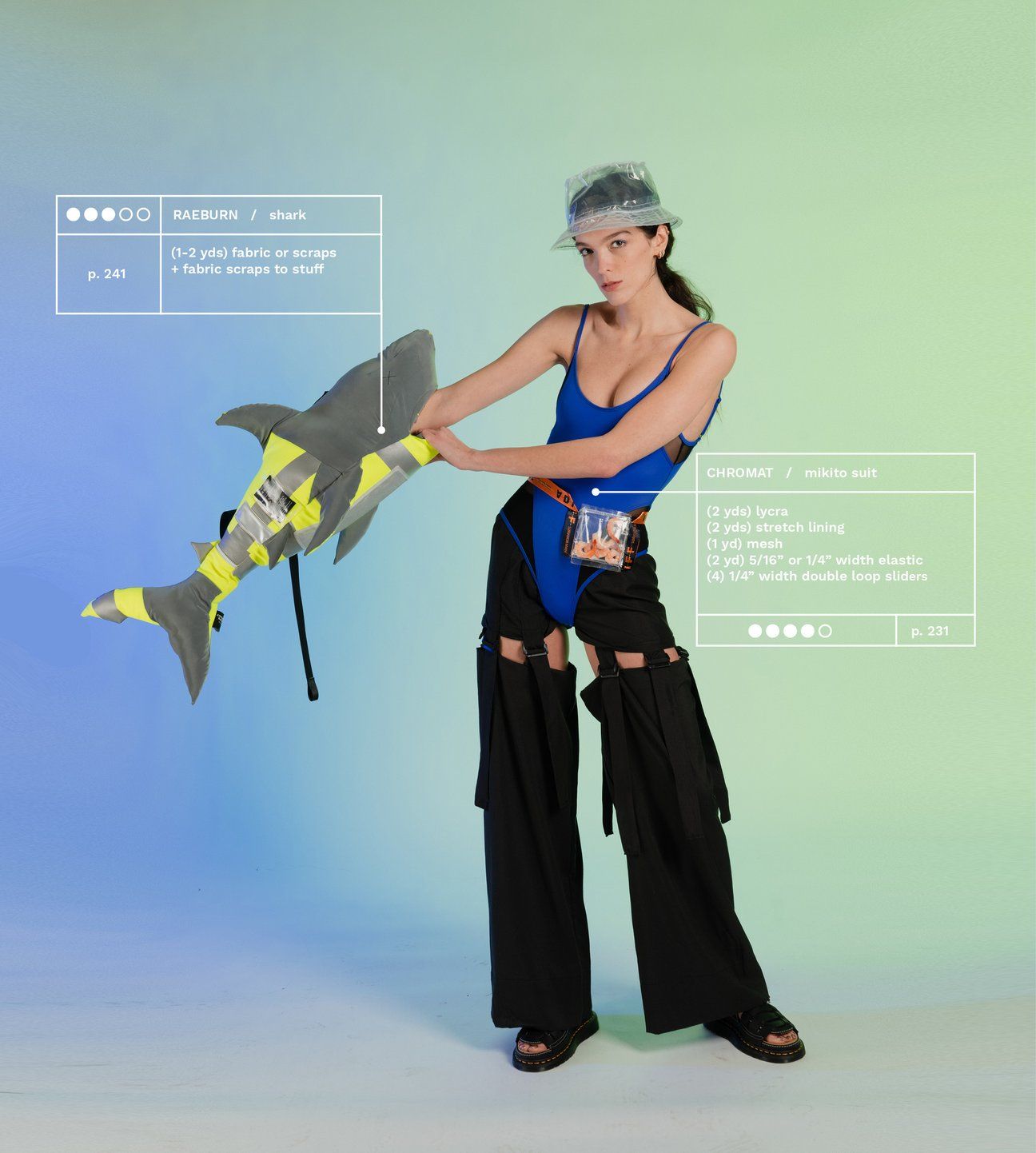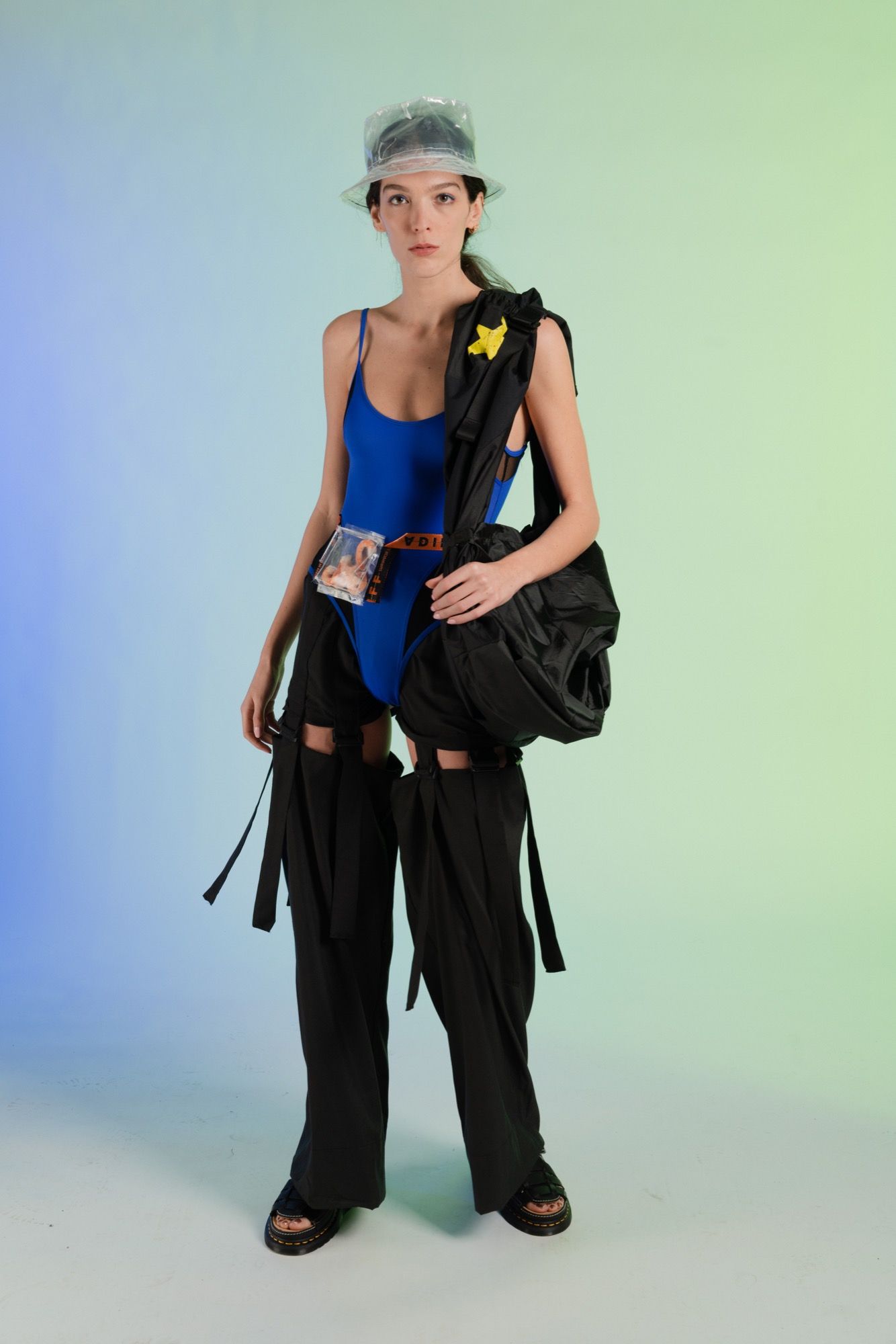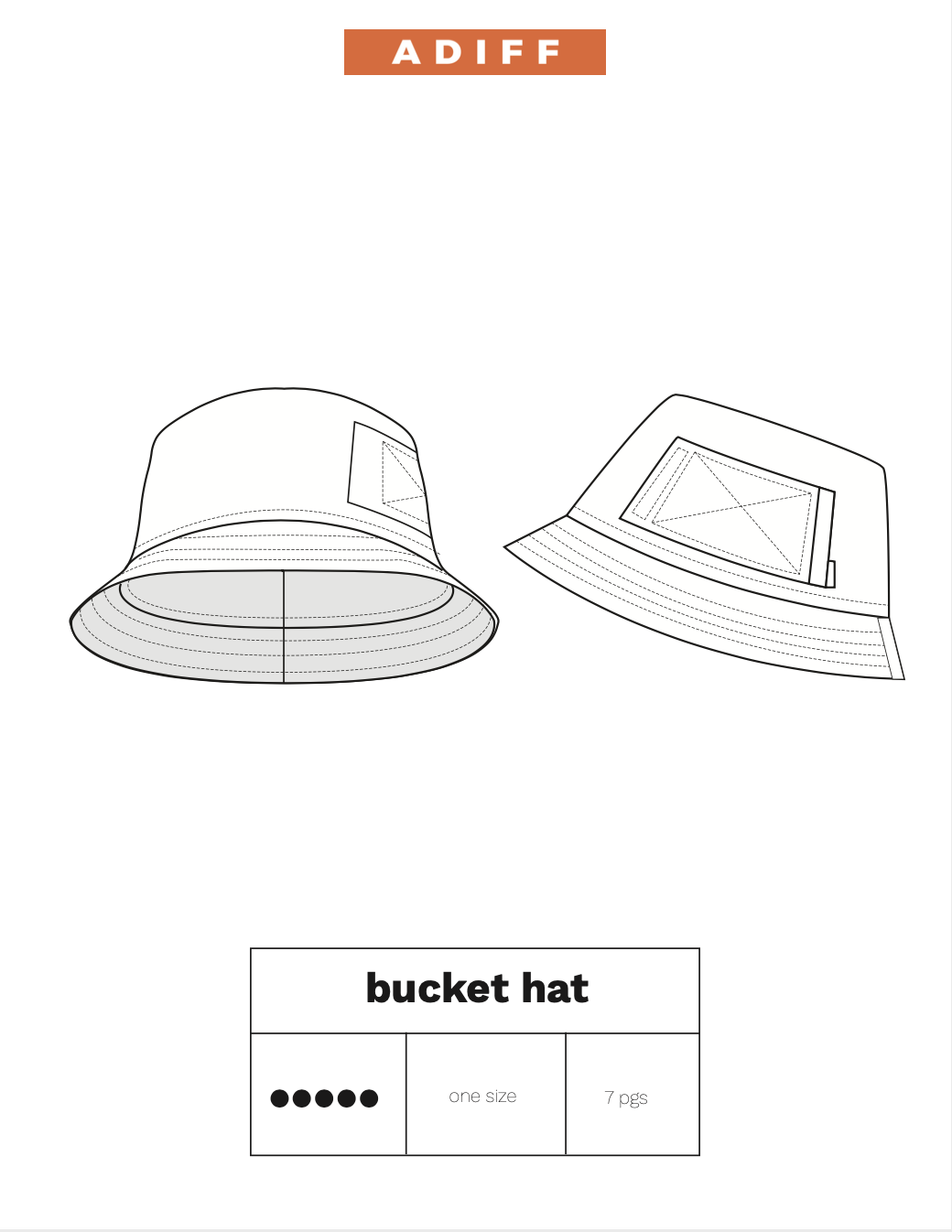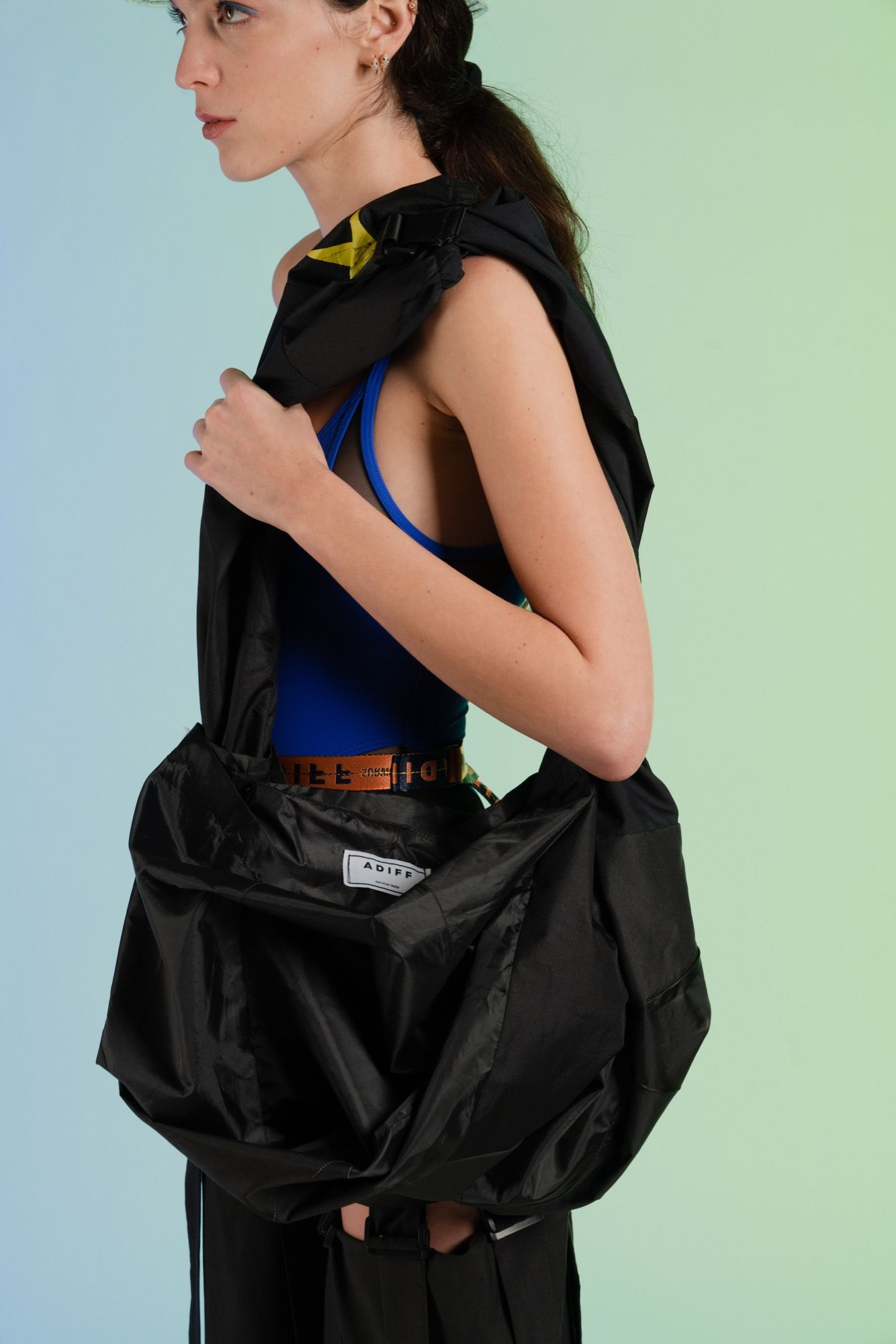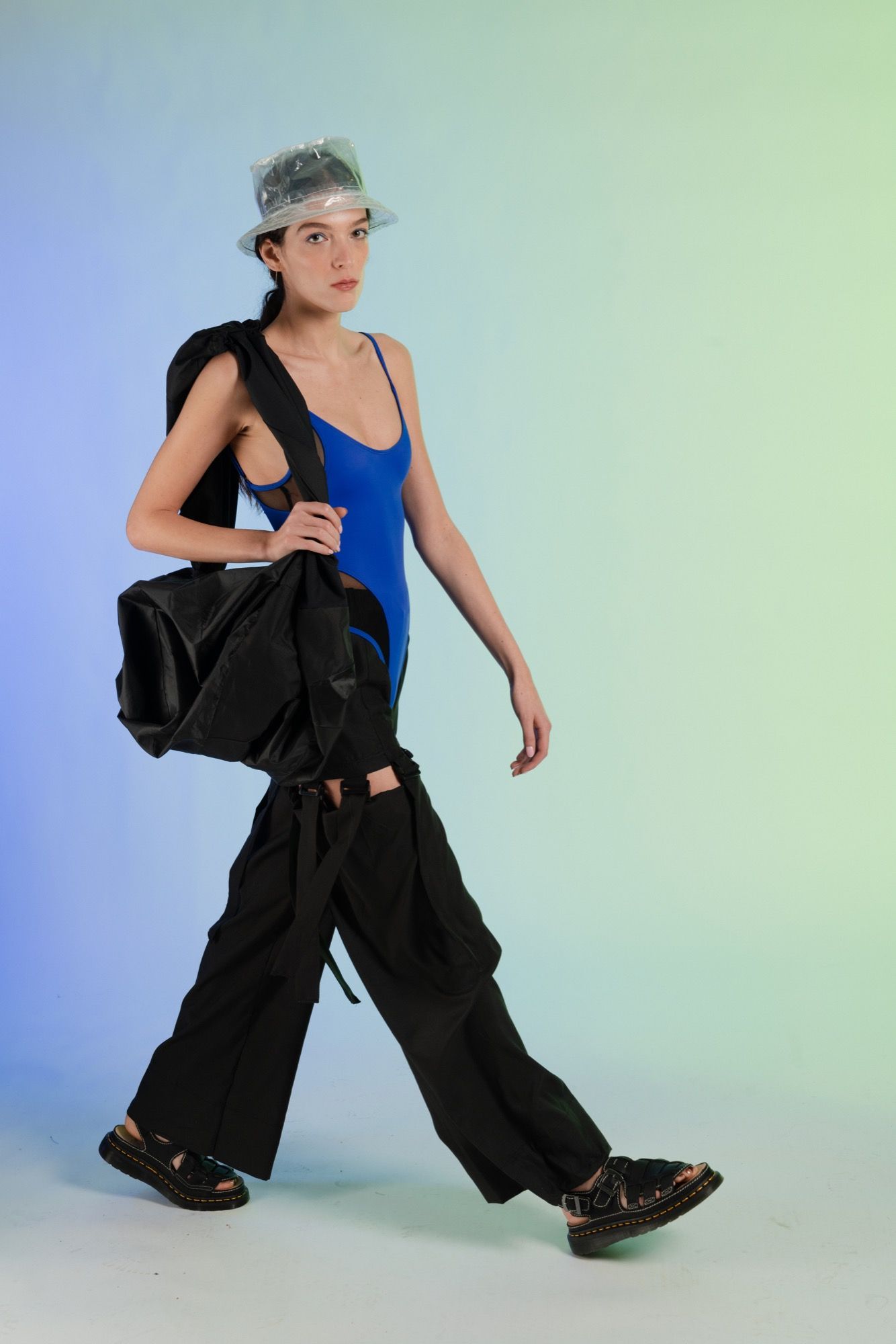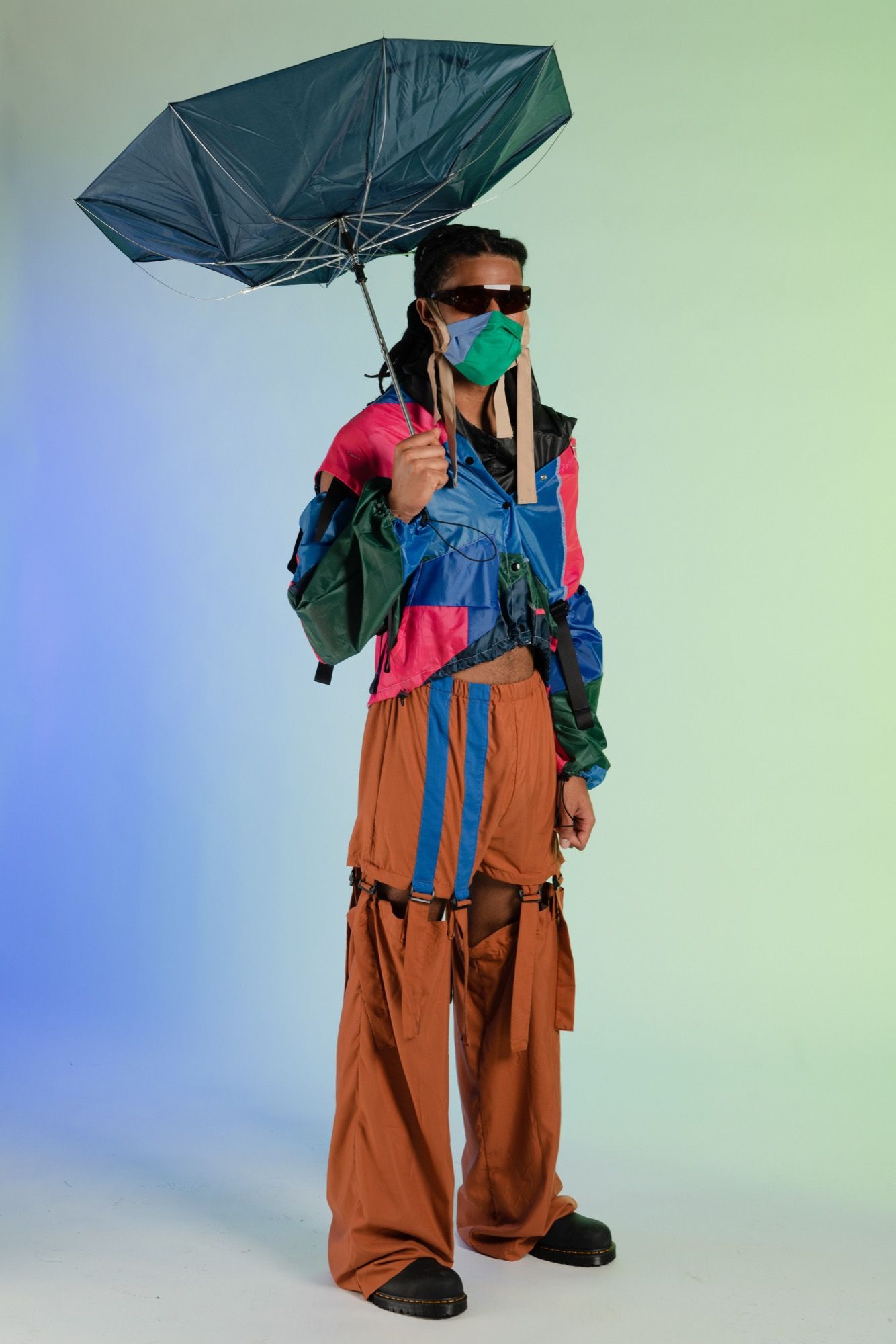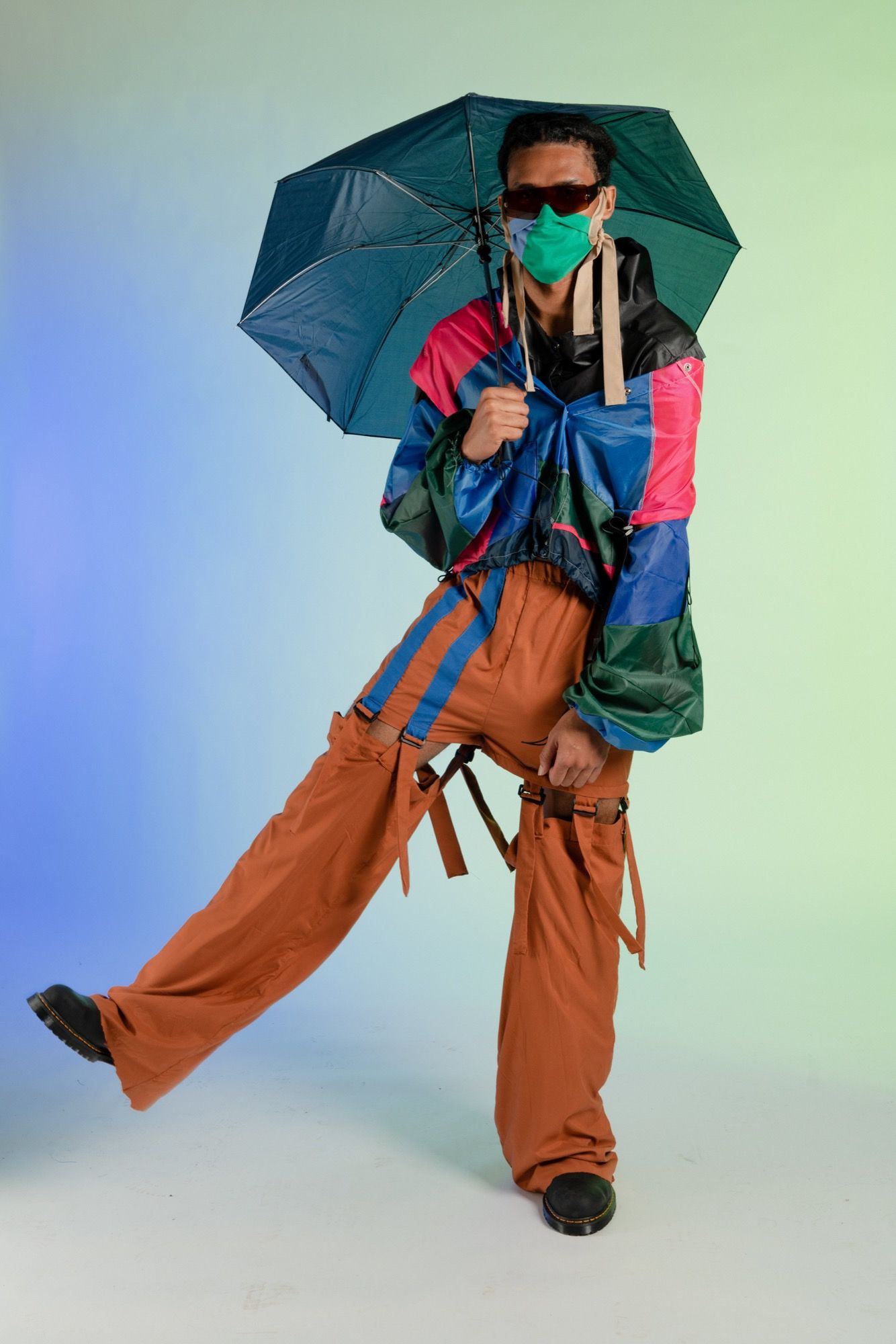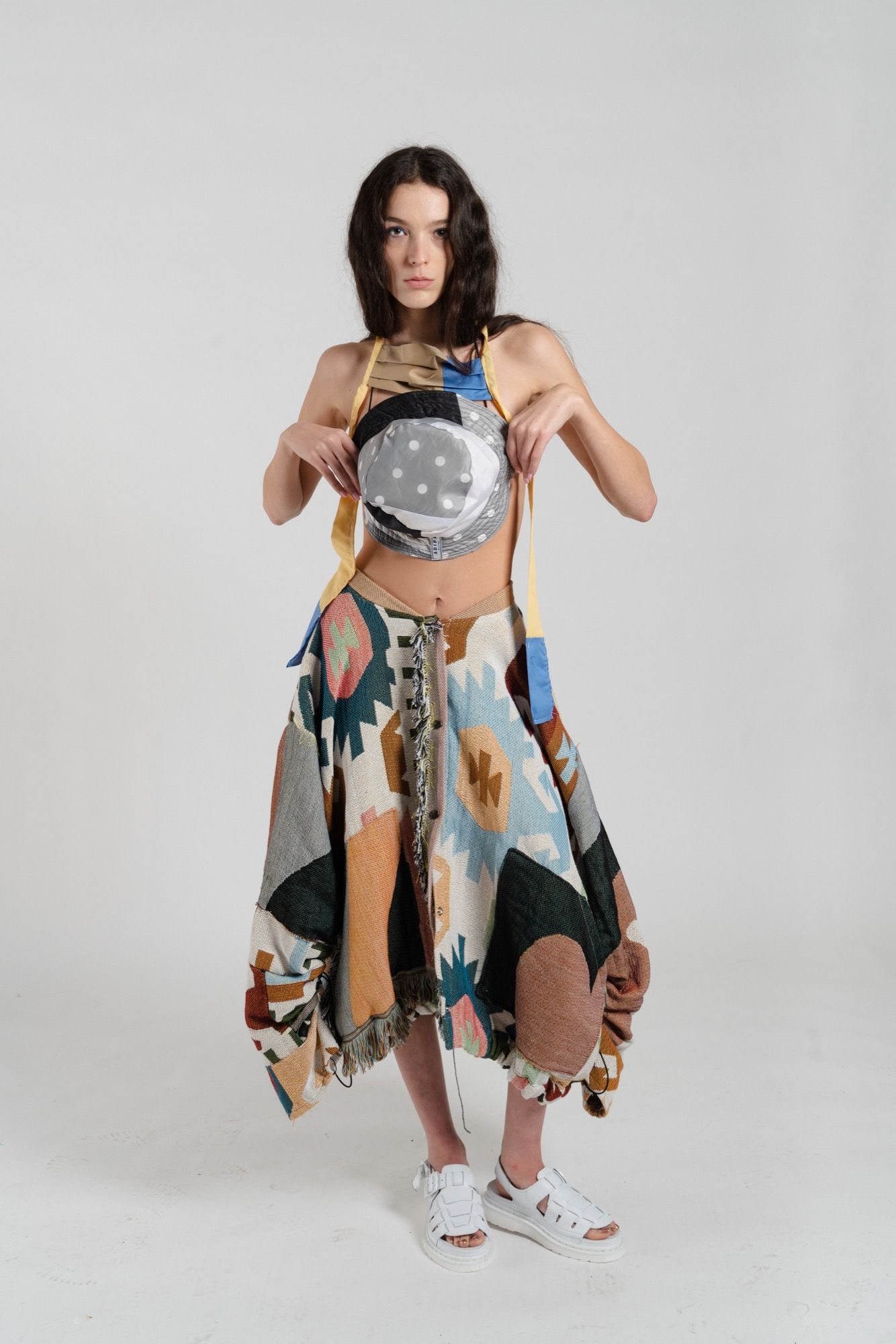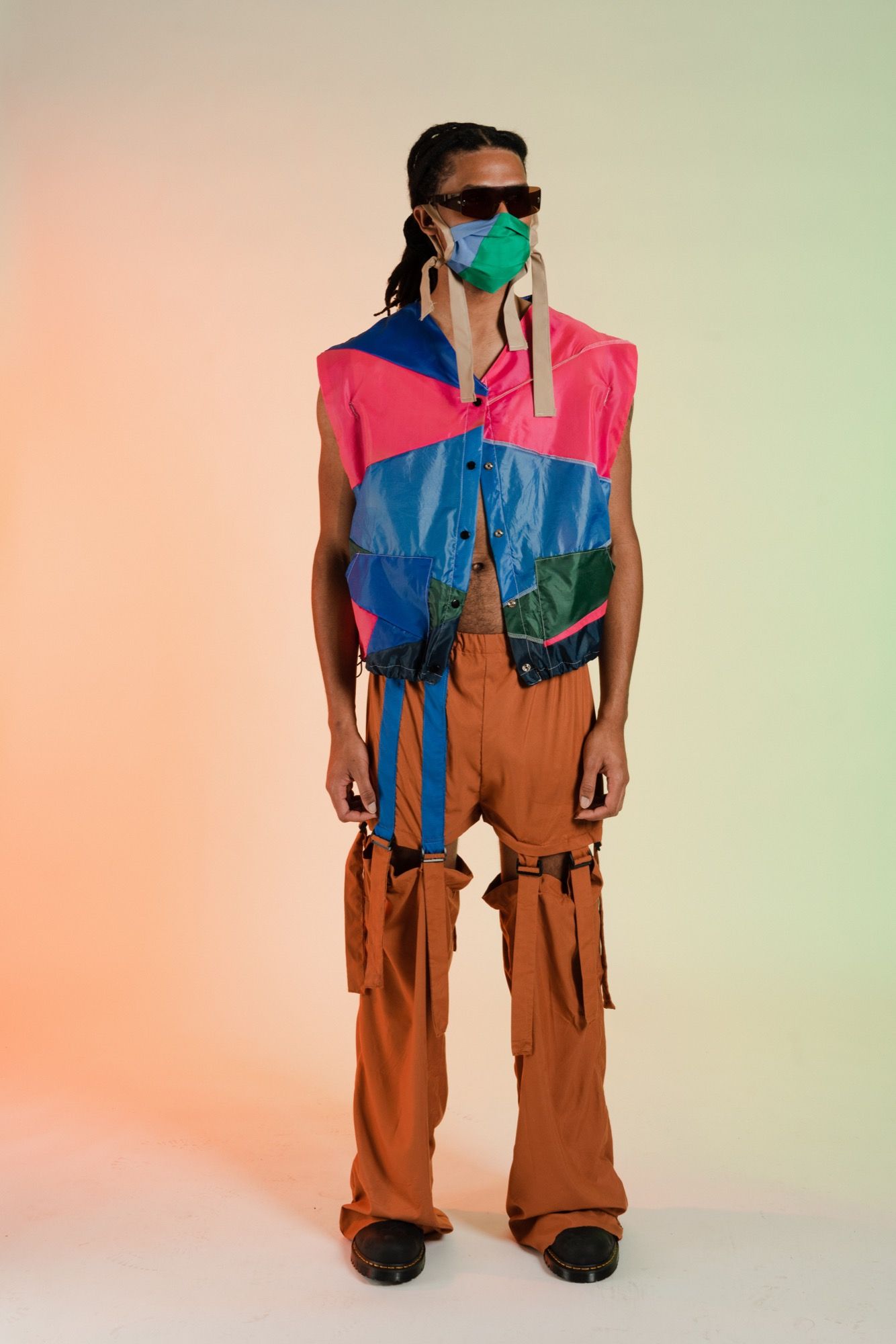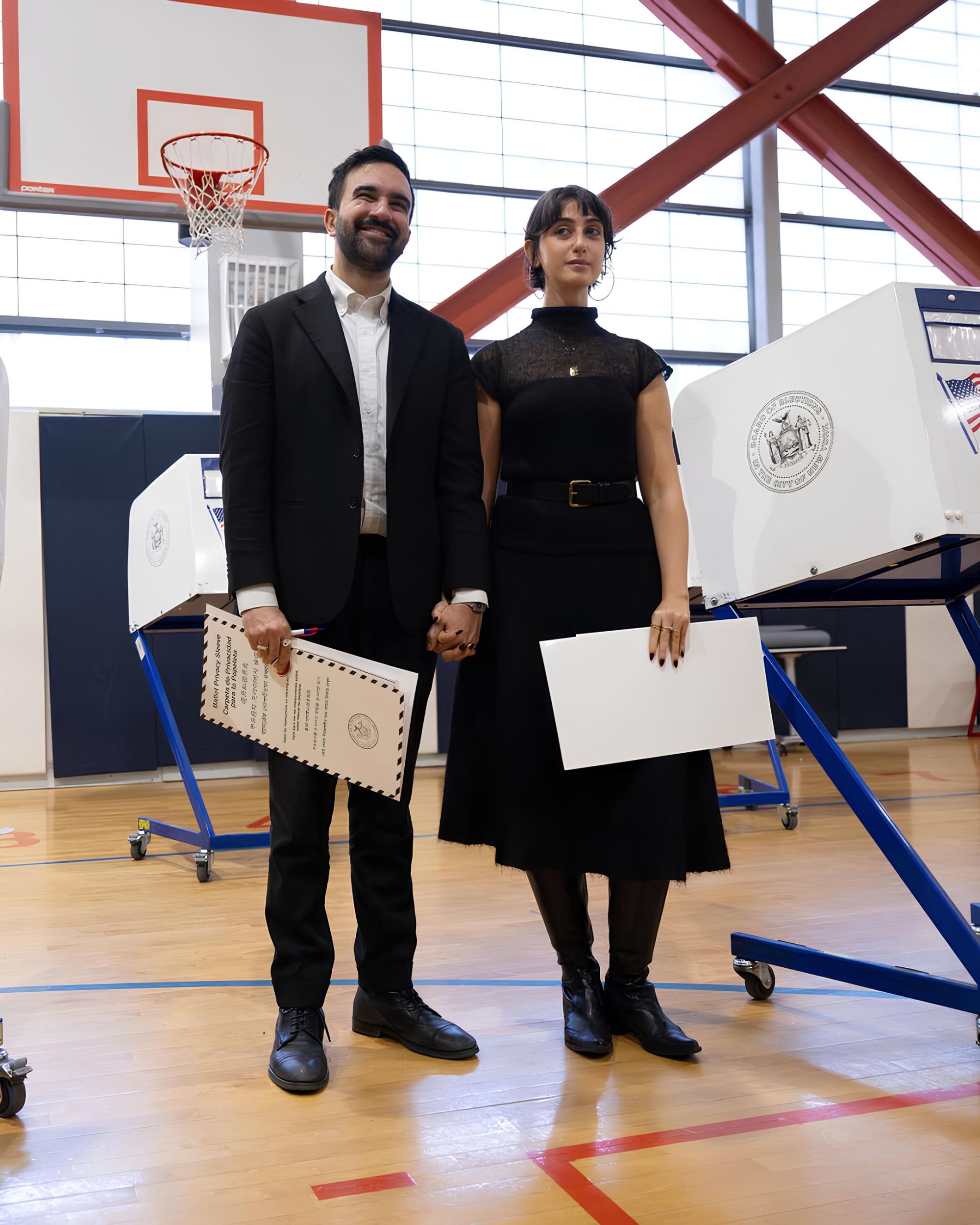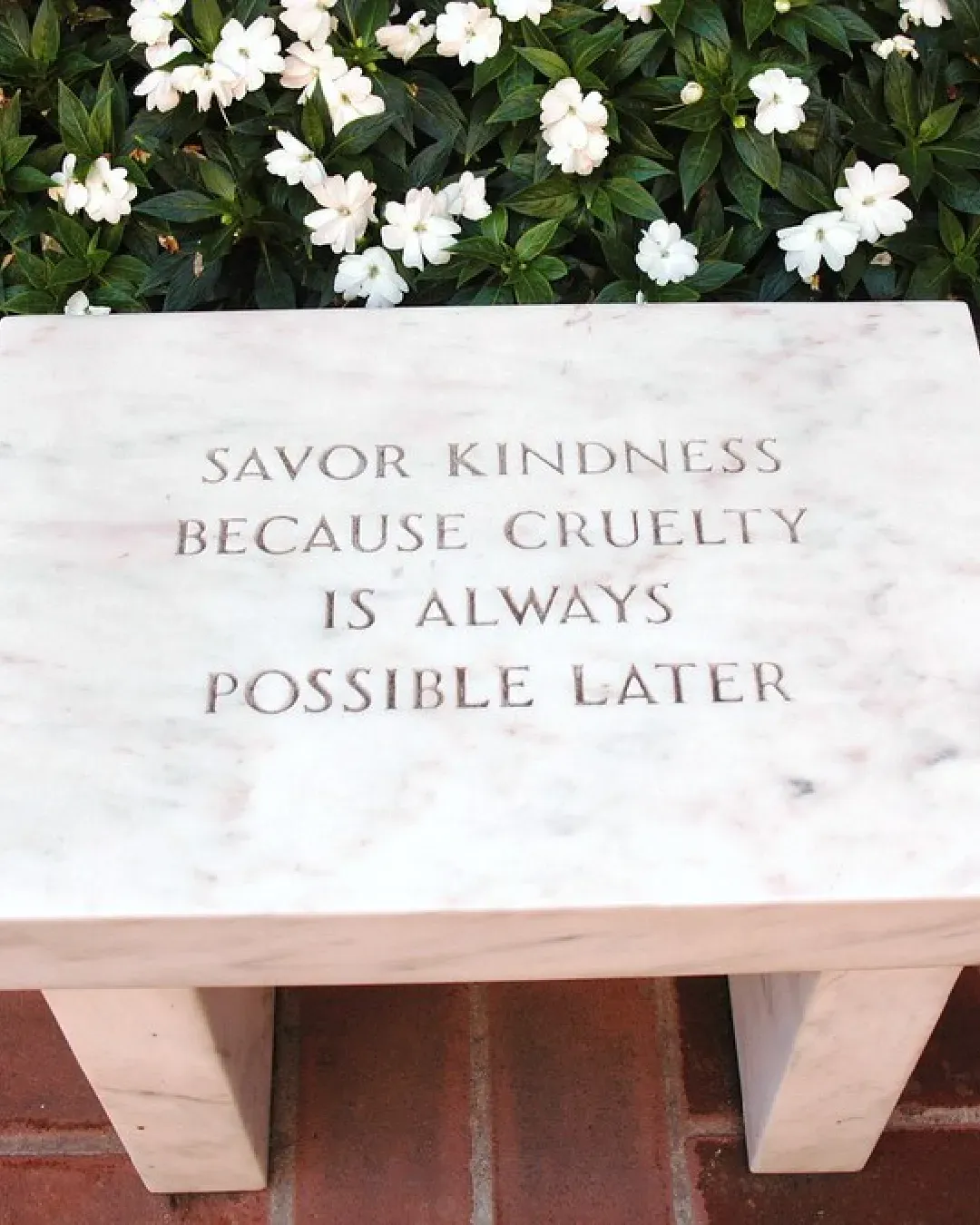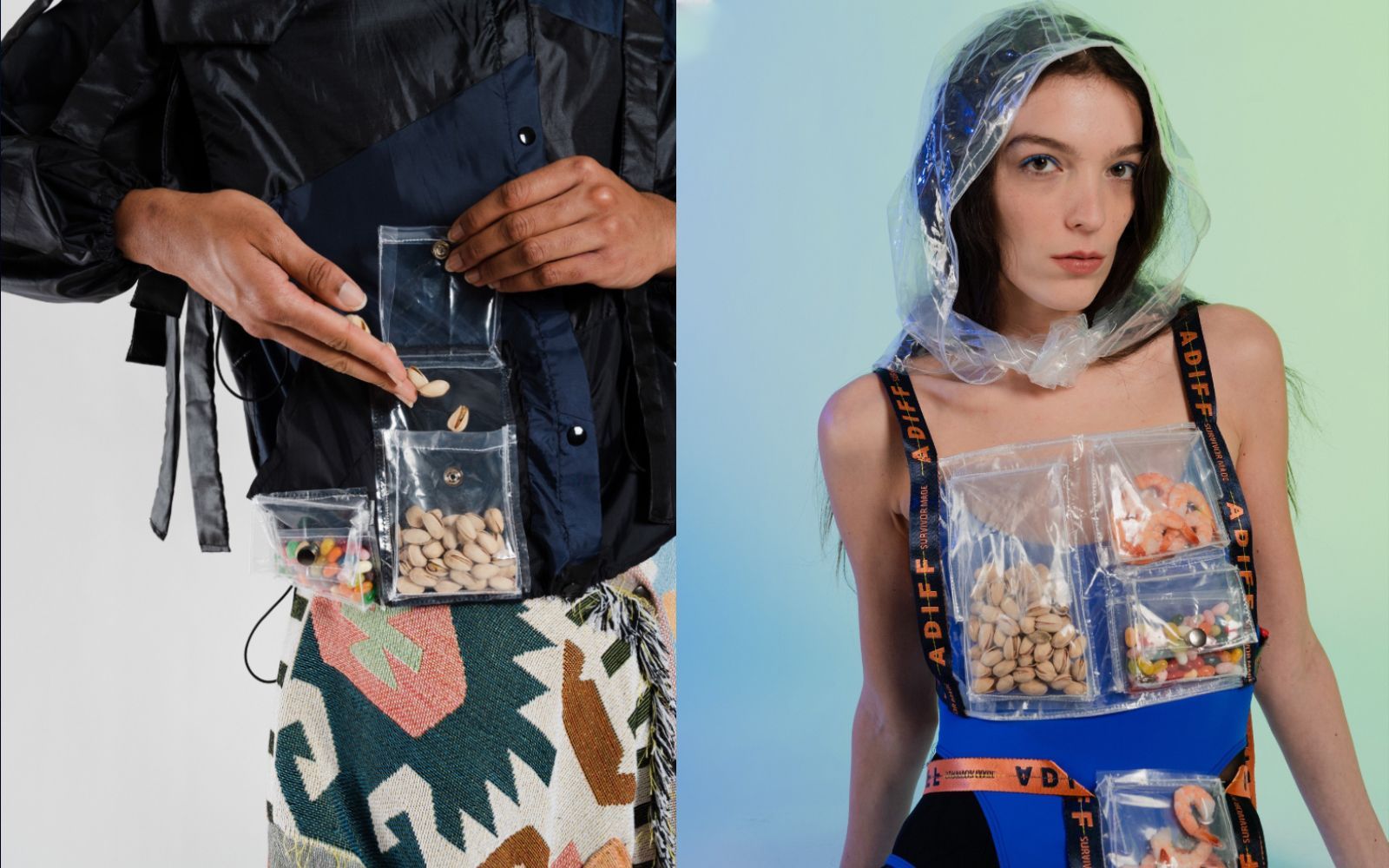
The brand turning DIY fashion into a cookbook ADIFF wants to make the fashion industry more ethic and accessible for all
"While attending Parsons, my professors always said that if you were a good designer, chances are you’re also a good cook. We started thinking more about the similarities between the fashion industry and the food industry during our quarantine time. When you put the two side-by-side, it’s interesting to see how much they overlap: fast fashion parallelling fast food, contemporary fashion similar to restaurants, and high fashion with Michelin star cuisine. However, at the end of the day, the cheapest and healthiest option is to buy the groceries and cook for yourself when it comes to food. Like fashion, the cheapest, most ethical, and most sustainable option would be to learn how to make the garments for yourself. The main hangup is: most people know how to cook, but the craft of creating and caring for your own garments has been lost."
Mixing and matching the wardrobe pieces for a complete look at times resonates with a recipe. Angela Luna and Loulwa Al Saad, the co-founders of ADIFF, an initiative that promotes upcycling, and social justice, have already designed a ‘cookbook’ that gives away clothing patterns for those who want to redesign their existing clothes. The ingredients of the Open Source Fashion Cookbook are a snack pocket, blanket jacket, even a bucket hat realized from a broken umbrella, and other patterns that can be assembled into a unique piece at the end. By giving freedom to the book’s reader to design a piece of cloth, ADIFF also promotes the importance of sustainability and suggests an alternative to those who cannot afford to purchase new garments. With the rising interest in sustainability, can literature and step-by-step educational schemes become an accelerator towards solving the current critical situation in regards to waste generated by the fashion industry?
ADIFF works with refugees from Afghanistan in Greece, where the brand has placed its manufacturing facilities. The turning point in the brand’s identity and sales came after their “jacket that can turn into a tent” solution-based design, which is aimed to assist the homeless and refugees. It was sold on a buy-one-give-one model and pushed the brand to further experiments. "Our manufacturing facility in Athens, Greece, was established with an upcycling system in place, unlike most larger factories. We envision this industrial shift must be done as a unified approach across all product categories and brand levels, which is why our future focuses so heavily on collaboration and partnerships", says Angela Luna. Starting as a non-profit organization, ADIFF evolved into a business that has driven interest in the fashion market, which was gradually getting accustomed to the upcycling notion. Now, ADIFF presented their book that is designed to "democratize sustainable and ethical fashion". “We understand that not everyone is a trained sewer, so we included recipes that vary in difficulty, from no-sew easy basics to more advanced designs,” state designers. The idea came from when ADIFF was producing face masks for the New York hospitals; Luna thought about gathering fashion designers to work together towards making fashion accessible and inclusive. "The nature of the book was to have the pieces able to be made from as many accessible household materials as possible, while also being suitable for a variety of sewing skill sets. We wanted every item to tie back into the narrative of inclusion, accessibility, and activism," says Angela Luna.
Being curious about the book and having a broken umbrella dusting in the wardrobe, an idea arose to try and test the patterns, and create the bucket hat recipe included in the book. The DIY journey began with carefully reading the 7-page step-by-step illustrations consisting of ingredients and their according steps. The ingredients were as follows: 2 umbrella tops or 1 shower curtain and 1 stiff fabric, which can be interfacing, muslin, or upcycled denim. According to the book, the whole process should have taken from 5 min to 1 hour. The patterns for the bucket hat were downloaded from their official website and the fabric from the broken umbrellas carefully removed with small scissors. Since the patterns for this particular design were scaled, the only thing left was to only print it out and put it on the umbrella fabric as it was illustrated in the paper. After cutting the pieces and stitching together following the illustration guidelines, the hat was ready.
The first thing that might alert the reader when approaching the book is its price tag - 60$, given a thought for it, too, ADIFF uploaded some patterns online for free. "While self-publishing is amazing, it’s more challenging with a designed book, especially one in full colour. In the interest of transparency, we wanted to share with you exactly where your money is going with your purchase,” declare designers. The first page of the Open Source Fashion Cookbook states the ADIFF’s expenses while creating and selling the book; 24$ from the price goes to the Amazon royalty, and the other 36$ is divided between the printing cost (20$) and designer commission (6$). 10$ is how much ADIFF’s net profit is at the end of all expenses. This move ensures transparency between the brand and the consumer; and when the results are compared to the price tag, it serves as a long-term investment, since it works as an educational tool. "We plan to continue with additional editions of our Cookbook, to push for a more accessible and equitable fashion system. Since we understand not everyone has access to sewing notions or machines, post-covid our goal is to open up our studio with workshops, allowing the public to come and create recipes from the book at our facility," says Angela Luna.
When speaking of DIY, smart design is a crucial approach that should be met while promoting upcycling, as its purpose is to simplify the process and design to make it accessible. Living in the period, when trends still influence consumer behaviour, the way brands communicate and spread messages of sustainable practices has its impact on fastening the implementation of ethical behaviour. The lines of owning a design slowly blur, as the concept of Do It Yourself (DIY) becomes a trend mostly among Millennials and Gen Z. Based on the research conducted by Opinium in the UK in 2020, two in five adults involved themselves in DIY during the lockdown with almost half of the number planning to continue in the future. DIY ethics motivates people regardless of their background and status to find solutions to various questions without relying on paid professionals. Perhaps, both because of the latest situation in the world that has forced people to stay indoors and also the rising interest in sustainability, the idea is purposeful and also entertaining to endeavour. "In a world of reuse and extending the lives of garments through consignment and resale, the only option for brands to keep designing new items is to make these pieces from reused materials. As prices of designer items increase due to ethical labour costs and recycling materials, we also see the future of upcycling being democratized so that everyone can participate, regardless of their level of income," says Angela Luna.
Fashion systems might fall into a cookbook in the near future, where it’s not the brands who set the trends but individuals suggesting their own. Doing from scratch gives the freedom of expression and techniques acquired throughout the process, and hence, makes DIY participants resilient towards the mass markets and fast fashion, in specific. Starting from assembling home items from IKEA, followed by old-jeans/new-shorts, there lies a number of possibilities to re-imagining and re-creating worn-out pieces into fresh and practical designs. Upcycling is not a newly emerged term but a process that has been exercised by our grand-grandparents, but it is in the current period that its scale bears more importance. According to the Business Research Company’s report - Ethical Fashion Market Global Report 2020-30-, every second a truckload of clothes is being sent either to landfills or burned, making fashion one of the most polluted and waste generating industries. The sustainable market is expected to grow to $9.81 billion in 2025 as opposed to $6.35 billion in 2019. Meanwhile, considering the aftereffect of the pandemic which led to €140 billion to €160 billion worth of excess inventory from Spring/Summer 2020 collections, the mindset shift from fast to ethical is right around the corner.
"The industry (fashion) is connected on the surface to these global issues, but not in product, mission, or system. It’s also sad and ironic to see how most garment workers from POC communities are the ones being most affected by climate change and other environmental and human rights issues which the fashion industry further contributes to when in reality, those communities are the ones who practised sustainability long before it was rebranded and became a marketing buzzword in the western world,” states Angela Luna.









































